Welcome to our artichoke guide, where you will learn the easiest ways to clean, cook, and store artichokes.
From properly prepping to using them in delicious main dishes, this guide will empower you to cook easy recipes with fresh and jarred artichoke hearts.
Use the table of contents below to help you navigate through this page.
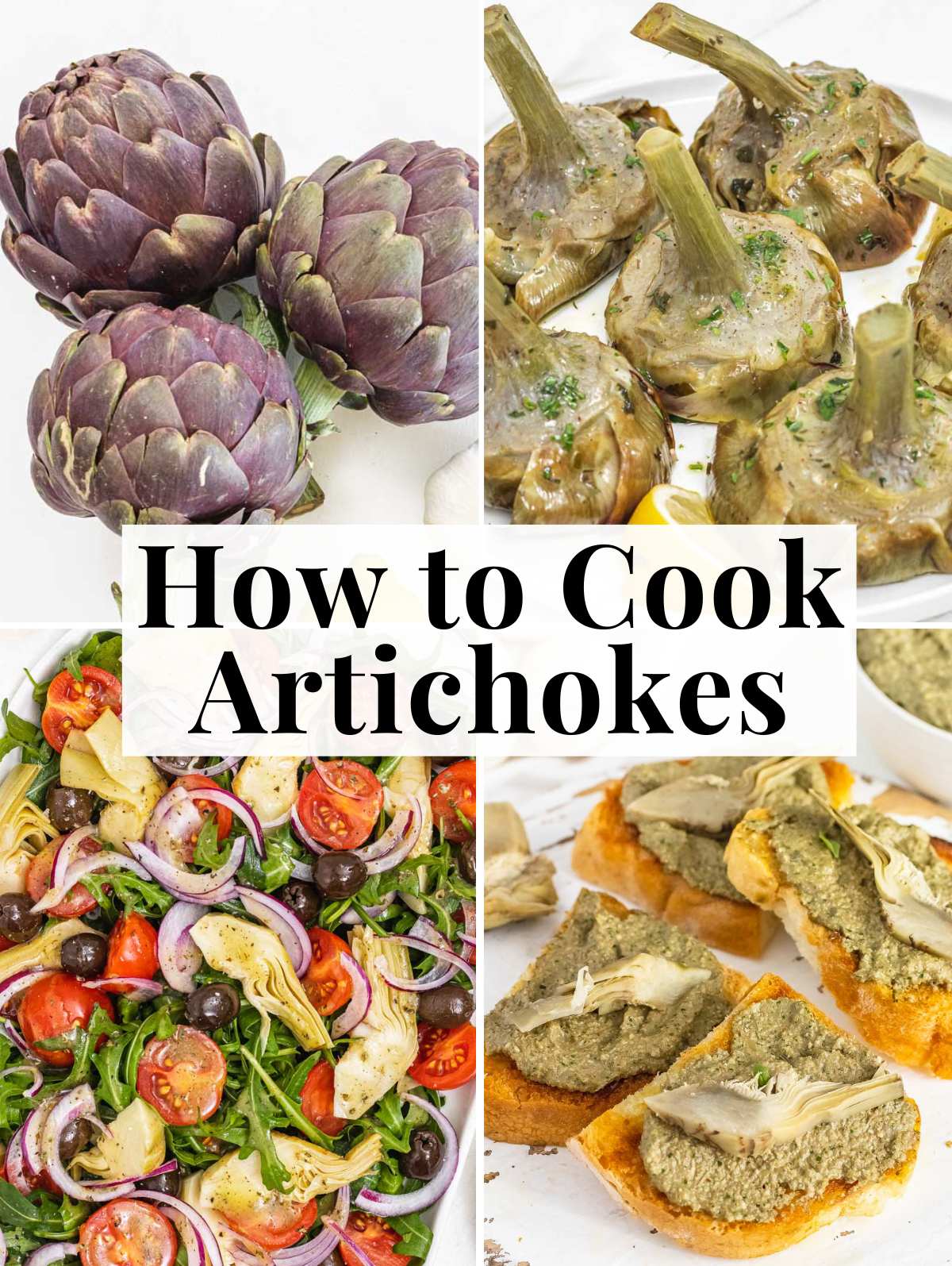
Table of Contents
- How to cook artichokes video
- How to clean artichokes
- Fresh artichoke recipes
- Recipes with Jarred Artichoke Hearts
- Recipes with Artichoke Scraps
- How do you choose which artichokes to buy?
- Ingredients that go well with artichokes
- Health benefits of artichokes
- Questions
- More basics
- Similar Recipes
- How to Cook Artichokes (Steamed Artichokes) Recipe
Artichokes have a delicate and nutlike flavor; the core, also known as the heart, is very tender and has a butter-like consistency.
They comprise several parts, some you can eat, some not: the thorns, the petals (or leaves), the choke (the fuzzy part in the center), the stem, and the artichoke heart, the best part of the artichoke.
Whether you’re a fan of Mediterranean–inspired cuisine or seeking inventive ways to enjoy artichokes, such as hummus, soups, and vegetarian dinner ideas, this roundup has something for everyone.
So, let’s dive into the world of artichokes and unlock the secrets to creating delicious, artful dishes!
How to cook artichokes video
How to clean artichokes
1. Gloves, water, and lemon juice
When cleaning artichokes, we advise wearing gloves or rubbing your hands with lemon juice.
We do this because otherwise, our fingers will turn brown. This happens due to the high amount of antioxidants in artichokes, one of the highest in any vegetable.
Antioxidants react with oxygen and color your hands.
Also, to prevent the artichokes from turning brown, fill a bowl with cold water and lemon juice. This will slow down the oxidation, keeping your artichokes bright and green.
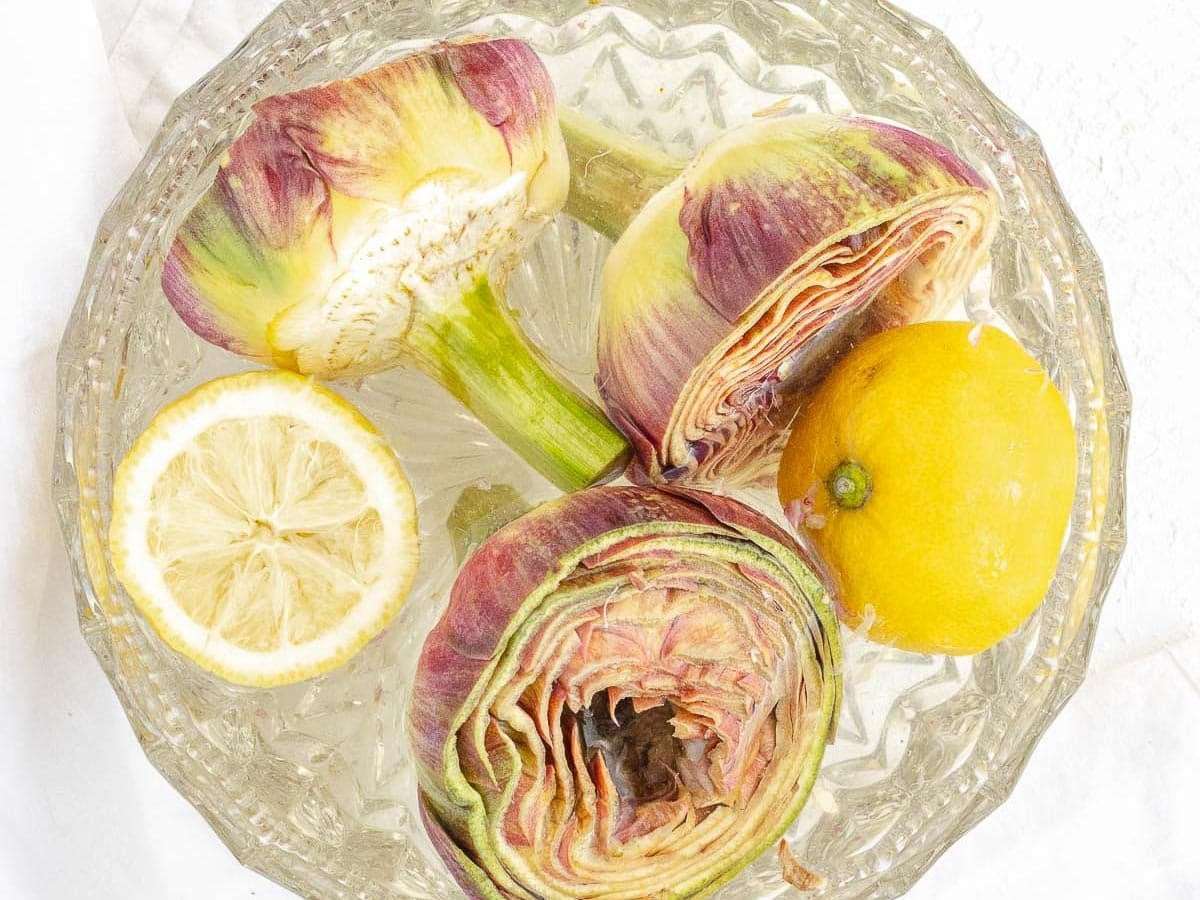
2. Thorns, outer petals, and stem
We want to remove the thorns, so go ahead and cut them off with a bread or serrated knife.
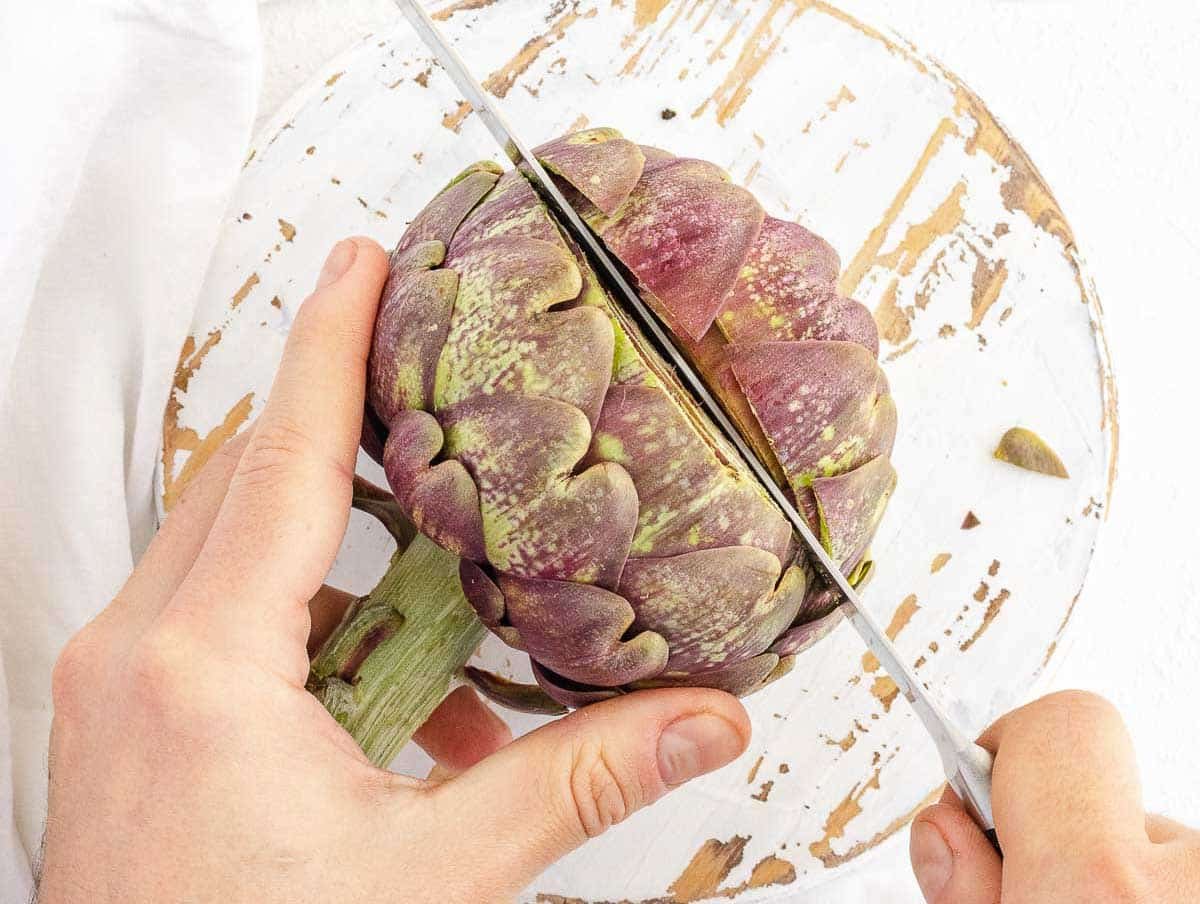
Rub the inside of the artichoke with lemon to prevent it from turning brown.
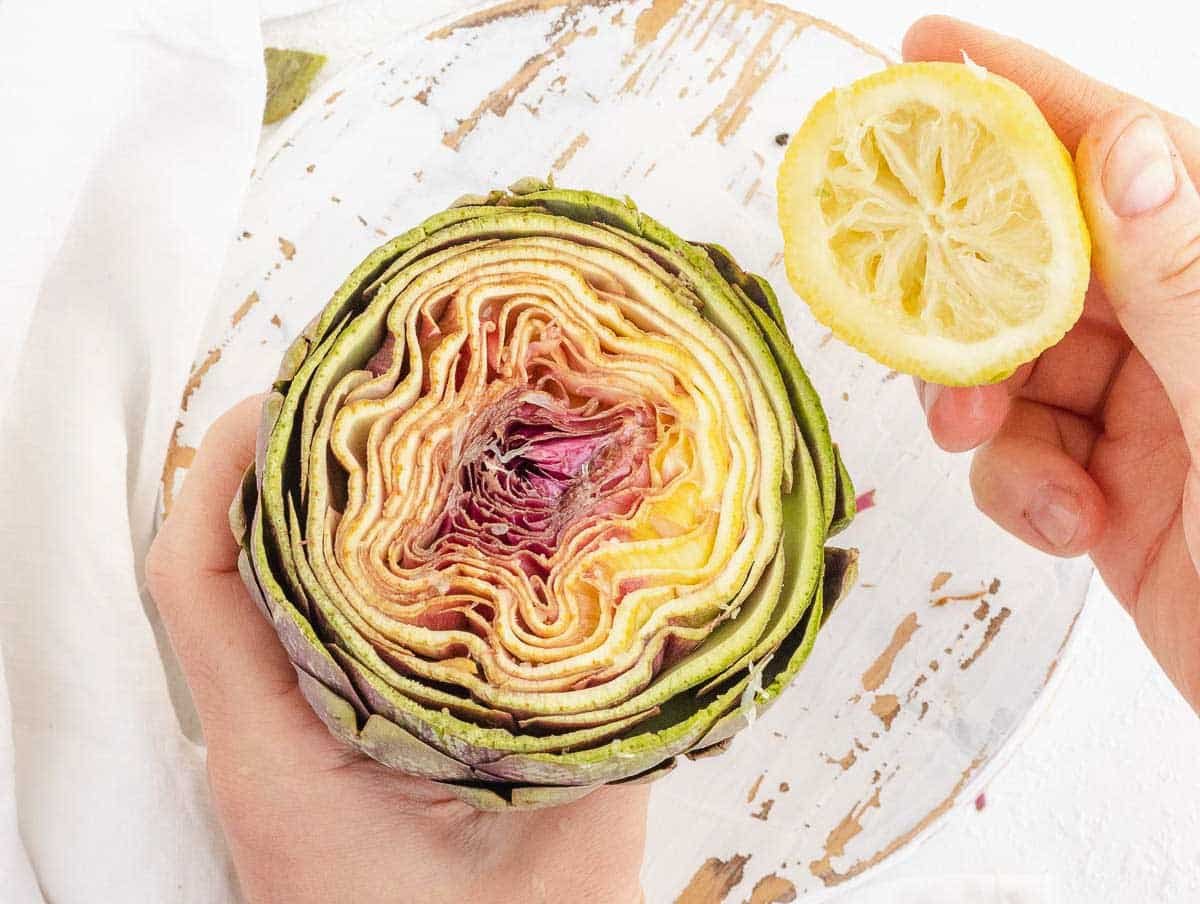
We also want to eliminate some thicker outer petals, which are way too hard to eat.
We prefer to remove most of the outer leaves until we get to the tender inner leaves, which are light yellow.
But you can keep more leaves if you prefer; trim them down with kitchen shears or scissors, then remove them once cooked.
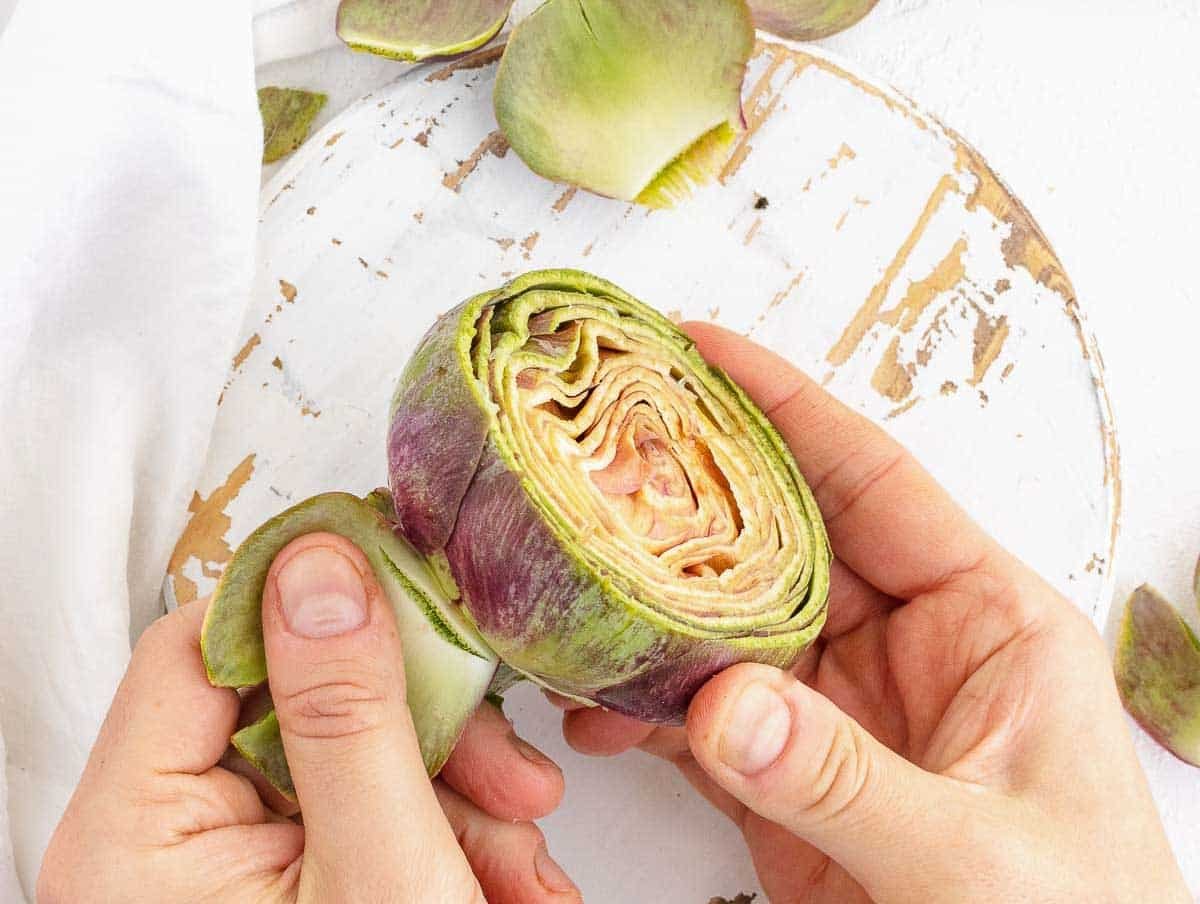
Next, cut off the stem, or part of it, leave a couple of inches or about 5 cm, and peel it with a paring knife or vegetable peeler, removing the woodier part on the outside.
At the same time, trim the bottom part of the artichoke.
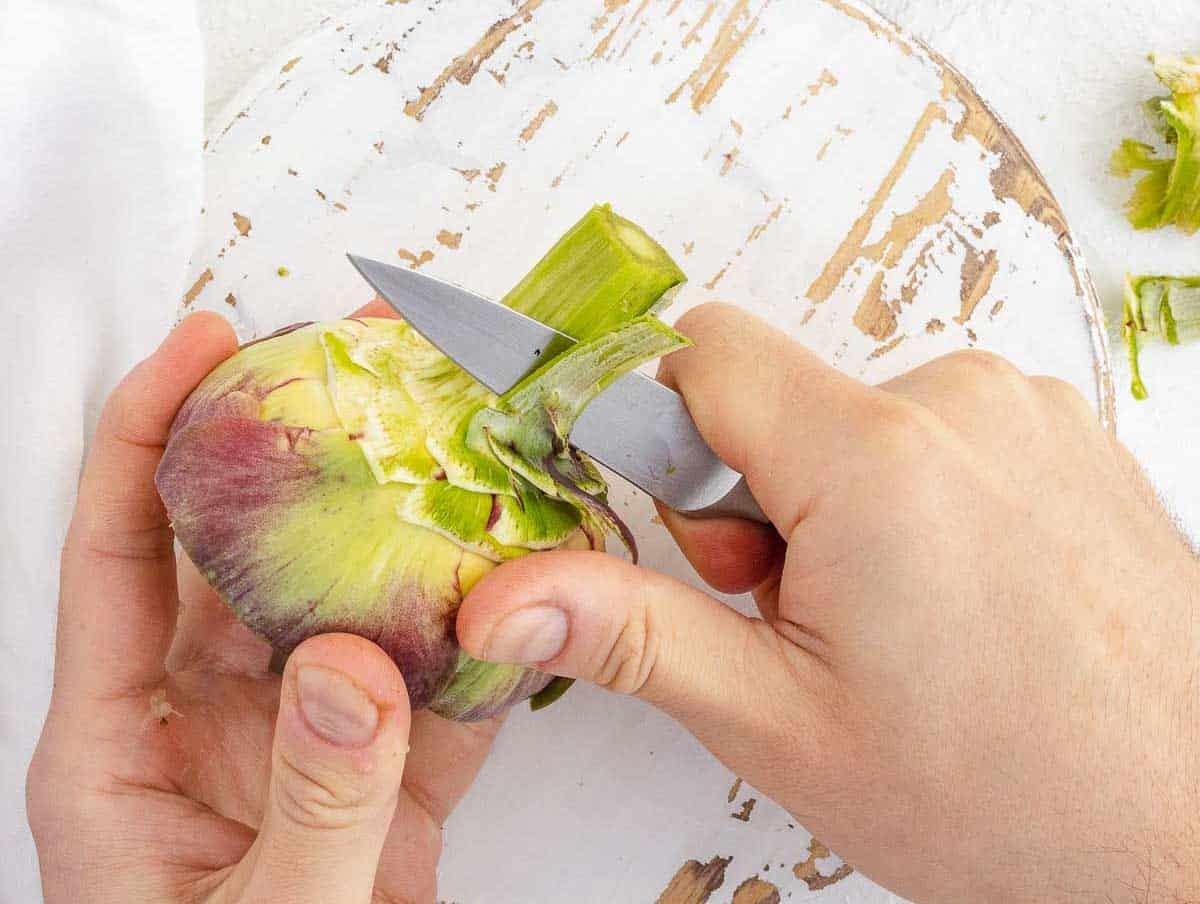
3. Carve out the hairy choke
And finally, before cooking the artichoke, we’ve got to remove the choke, the fuzzy part in the center, mainly if we serve them to kids.
The choke is very unpleasant to eat and can be a little dangerous, as it’s made of tiny hair that can get stuck in your throat.
To remove the choke, gently open up the center of the artichoke with your thumbs, exposing the fuzzy part.
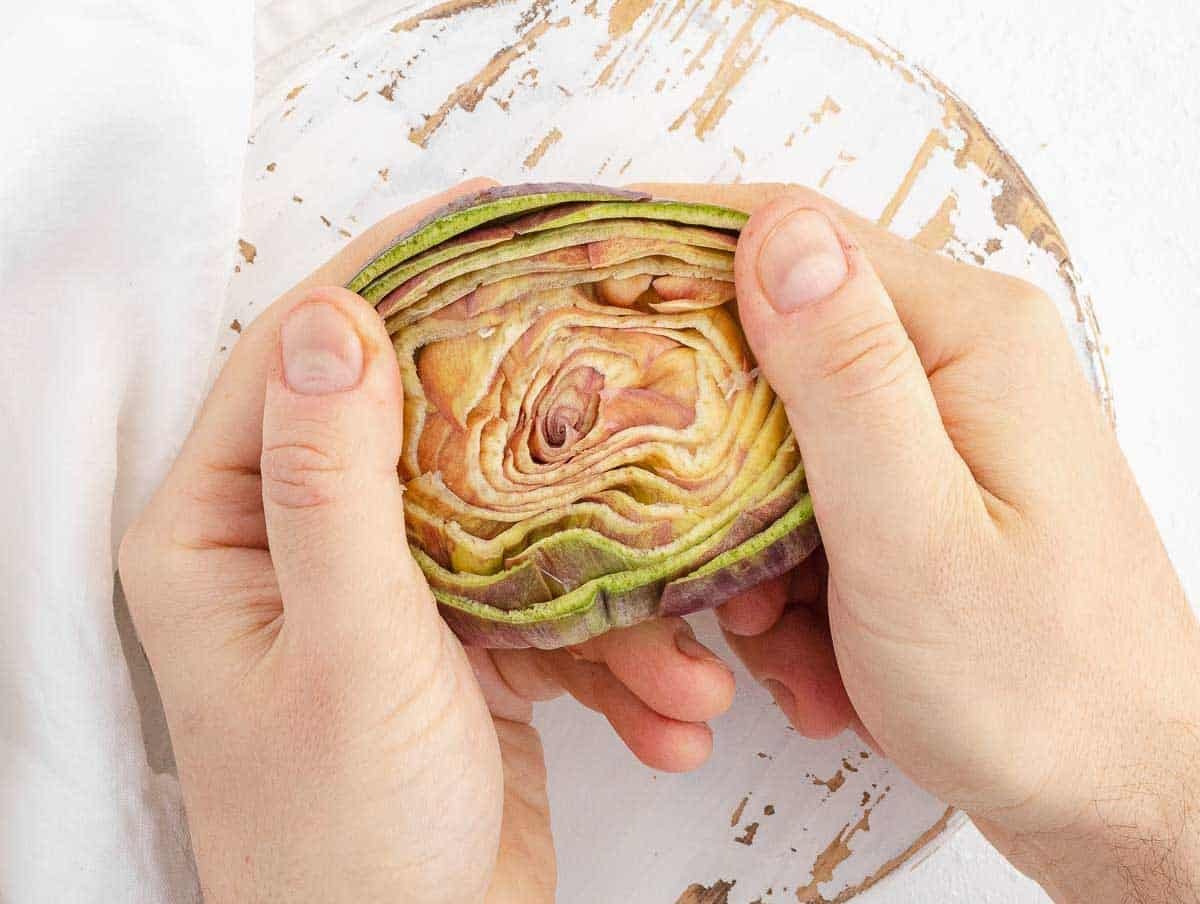
With a small knife, cut out the choke, then remove it with a teaspoon. With the choke, remove the small leaves attached to it, as they can be quite spiky.

Some like to remove the choke after the artichoke is cooked. You can do that by slicing the artichoke in half and removing the choke with a spoon.
We think it isn’t enjoyable to do that operation while eating. So, we remove the choke before cooking the artichoke.
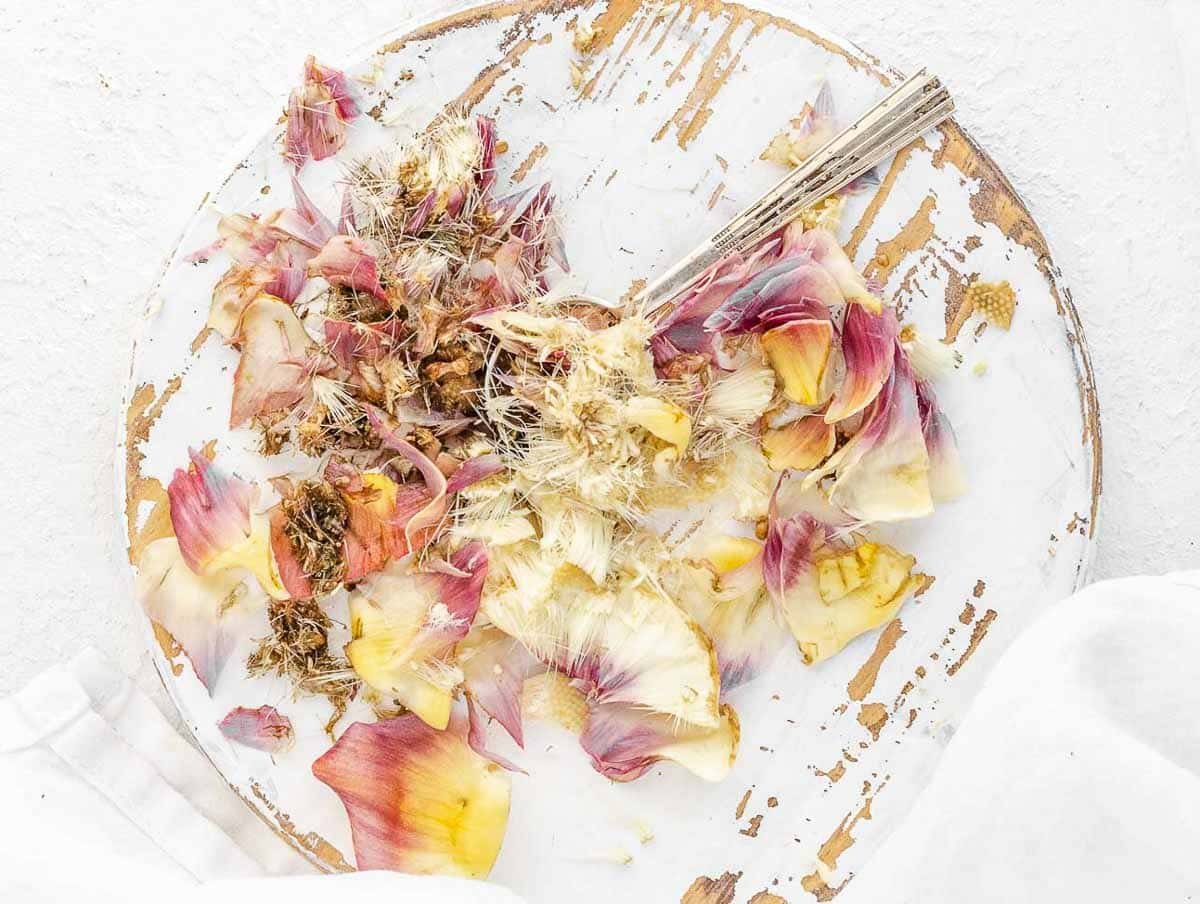
4. Put them in cold lemon water
Put the clean artichokes in the bowl with lemon water and cover them with a damp piece of kitchen paper to slow oxidation and keep them green and fresh.
If you want to get ahead and clean your artichokes in advance, you can keep them in a bowl with lemon water in the refrigerator for up to 24 hours.
Also, if you don’t want to discard the outer leaves of the artichoke, we have a recipe on how to use artichoke scraps to make some delicious recipes like soup or mayonnaise.
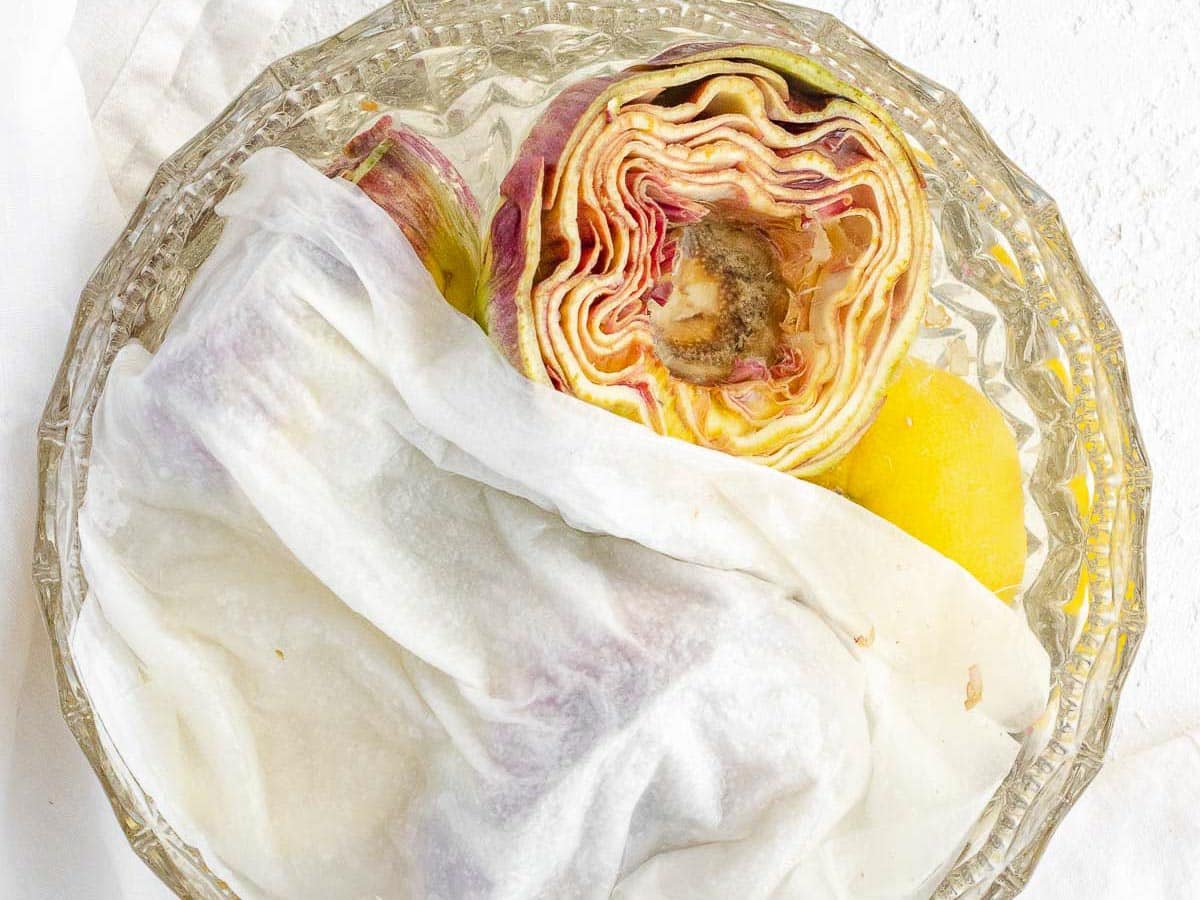
Fresh artichoke recipes
Steamed artichokes
Steamed artichokes are probably the easiest artichoke recipe. It would be best if you had a pot with a lid and a steamer basket to cook the artichokes in a steamer basket.
Add about an inch of water (2.5 cm) to the pot, add some aromatics like mint or bay leaves, place the steamer basket in, arrange the artichokes on the basket, face down, and cover with the lid.
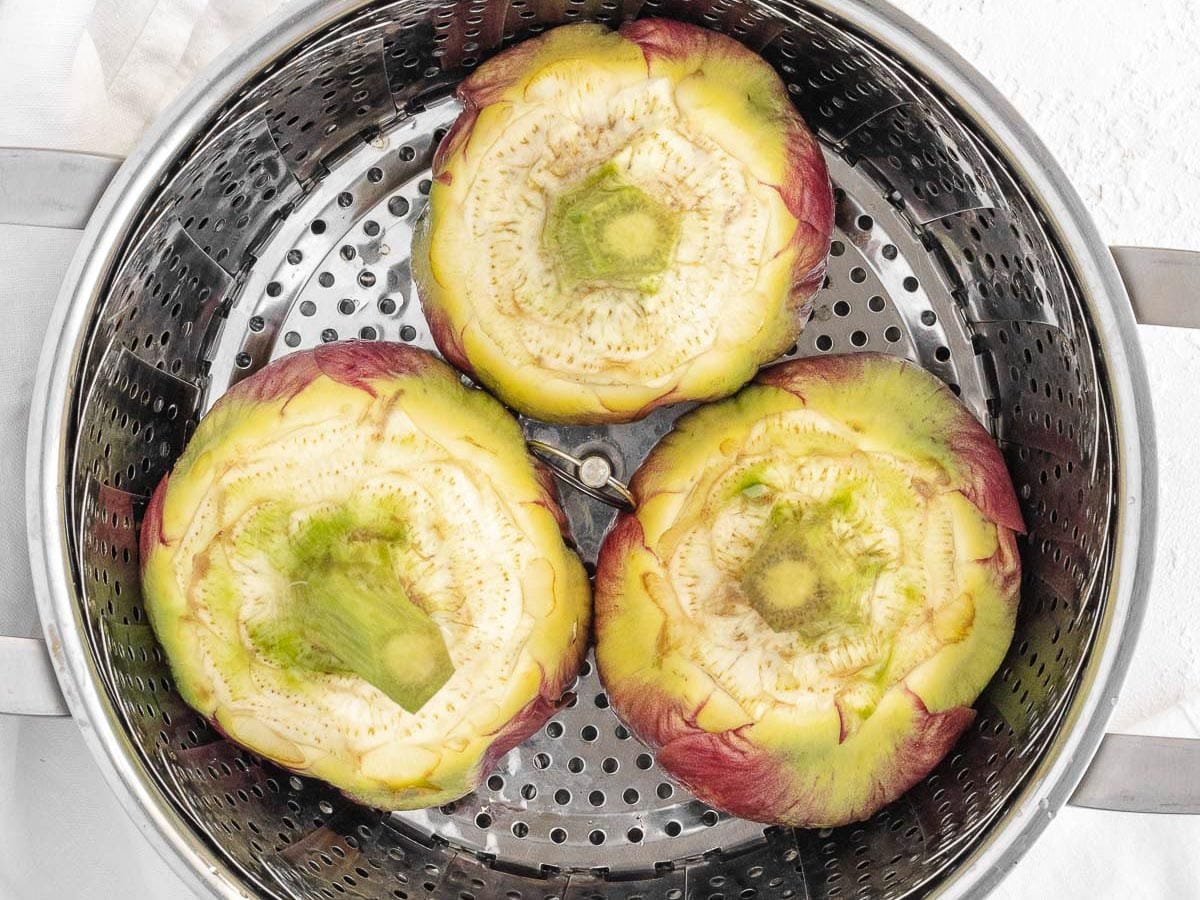
Bring the pot to a simmer and steam until the artichokes are soft. It can take between 20 to 40 minutes, depending on the size of the artichokes.
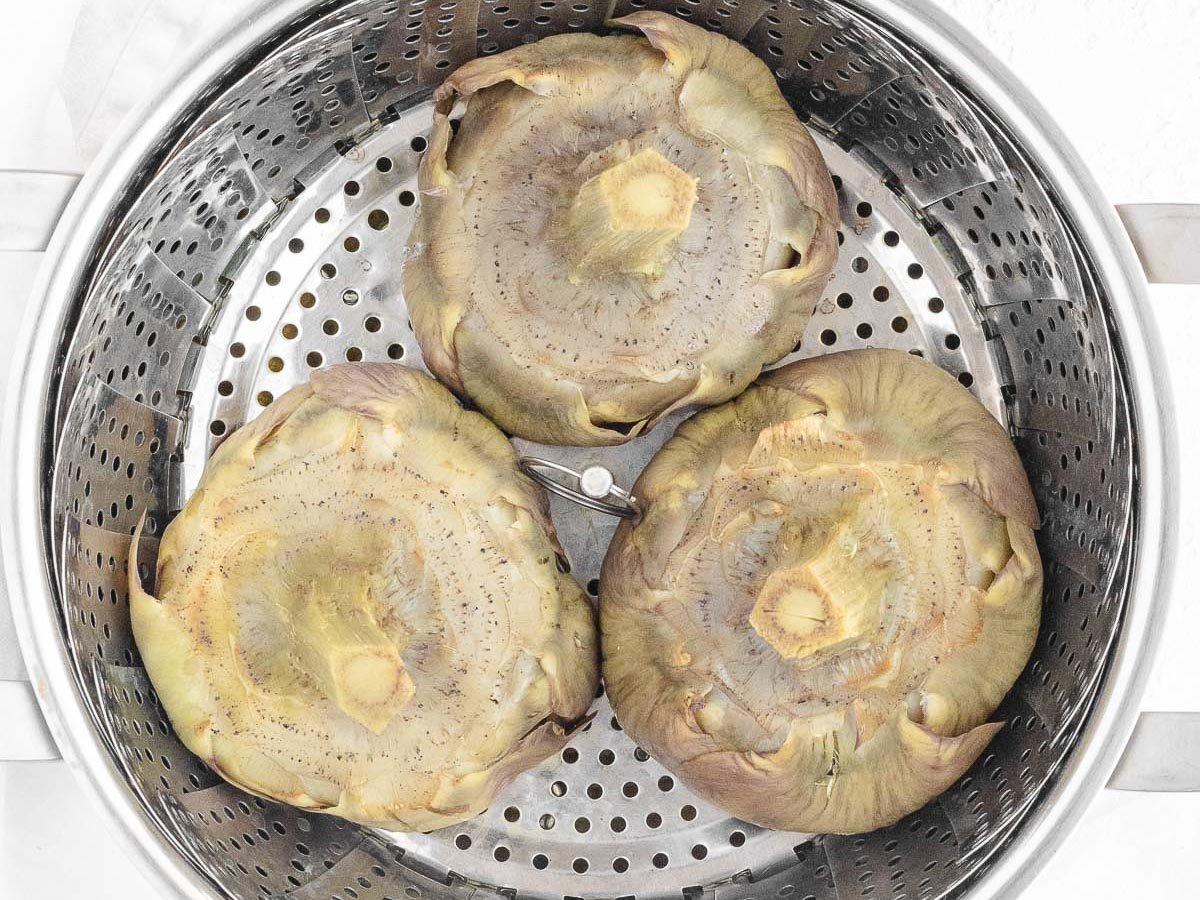
When tender, place the artichokes on a plate, garnish with freshly chopped parsley or mint, a drizzle of olive oil, or serve them with vegan mayo and chimichurri.
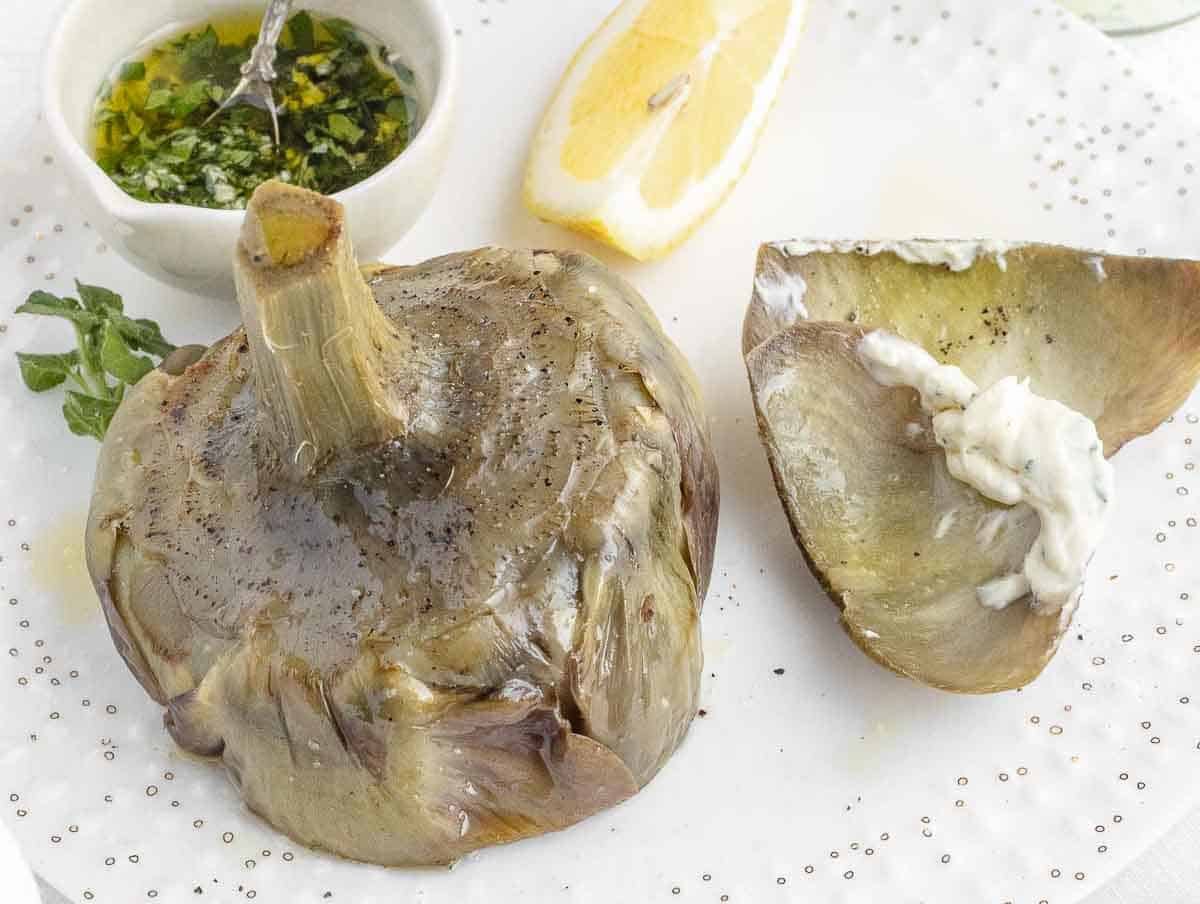
When cooked well, steamed artichokes melt in your mouth; they are creamy, have a mild flavor, are slightly nutty, and somewhat sweet.
Another delicious way of serving steamed artichokes is to cut them open in half, arrange them on a plate, then season them with finely chopped flat-leaf parsley, minced garlic, olive oil, salt, and a squeeze of lemon.
Check out our steamed artichokes recipe.

Braised artichokes
If you don’t have a steamer basket, try braising the artichokes with water in a medium to large pot that fits them snuggly.
This recipe is called “Carciofi alla Romana” in Italy (artichokes Roman style).
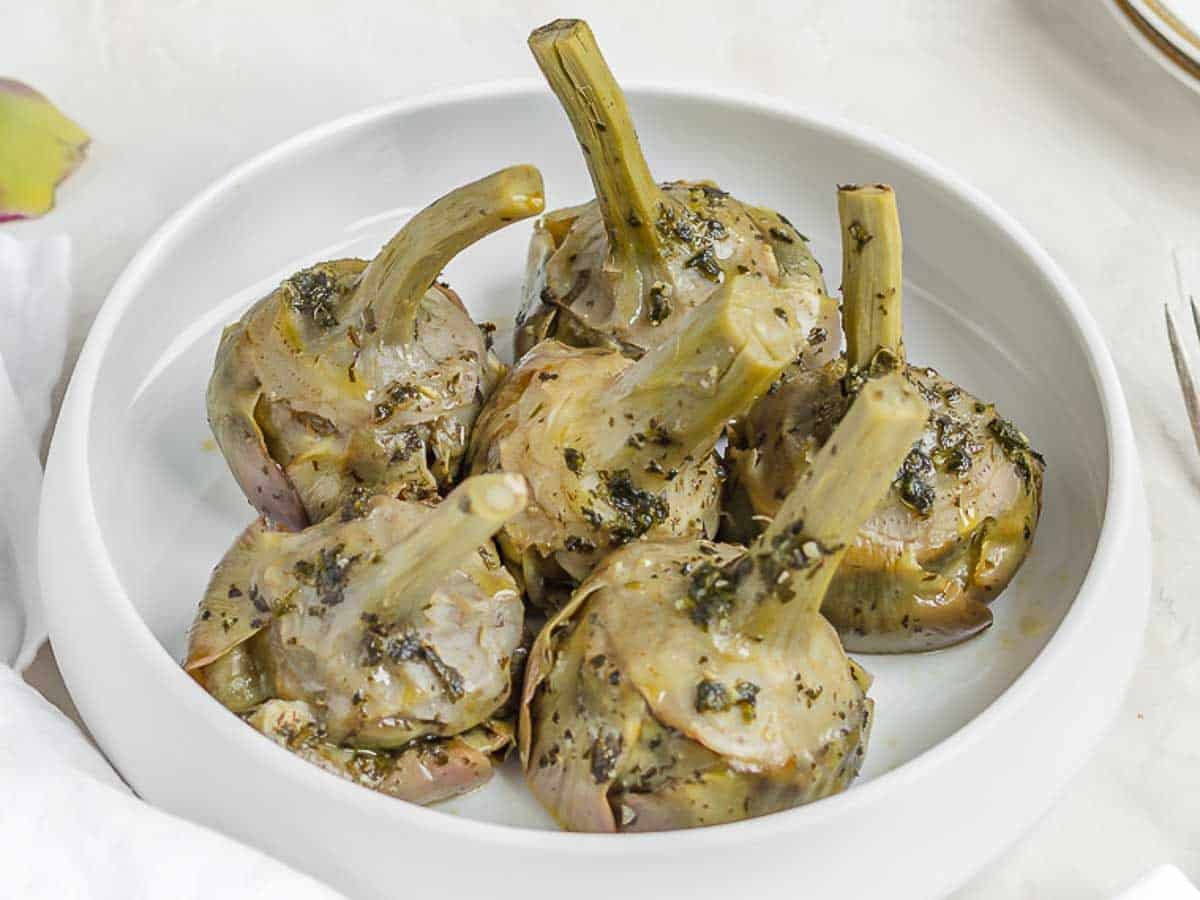
You can do it in a pot, instant pot, or pressure cooker (reducing the cooking time by about half).
To do that, clean the artichokes as we did before. Cut out all the tougher outer petals for this preparation.
Then, add a drizzle of olive oil, a crushed clove of garlic, and some mint leaves to a pot. Next, take your artichokes, season them with salt on the inside, and put them face-down into the pot.
Add water to cover about half the artichokes, put a lid on them, and simmer them on medium to low heat for about 20 to 30 minutes, depending on the size of the artichokes.

Once tender, serve them on a plate with fresh parsley, a squeeze of fresh lemon, and a drizzle of extra virgin olive oil.
Artichokes “alla Romana” is an excellent starter and vegetable side dish; serve them with crostini, no kneaded focaccia bread, or bruschetta.

Pan-fried artichokes
Artichokes are so versatile that they can be cooked quickly in a pan.
Cut the artichokes into quarters. With a small knife, remove the choke, then put the artichokes in the bowl with cold lemon water.
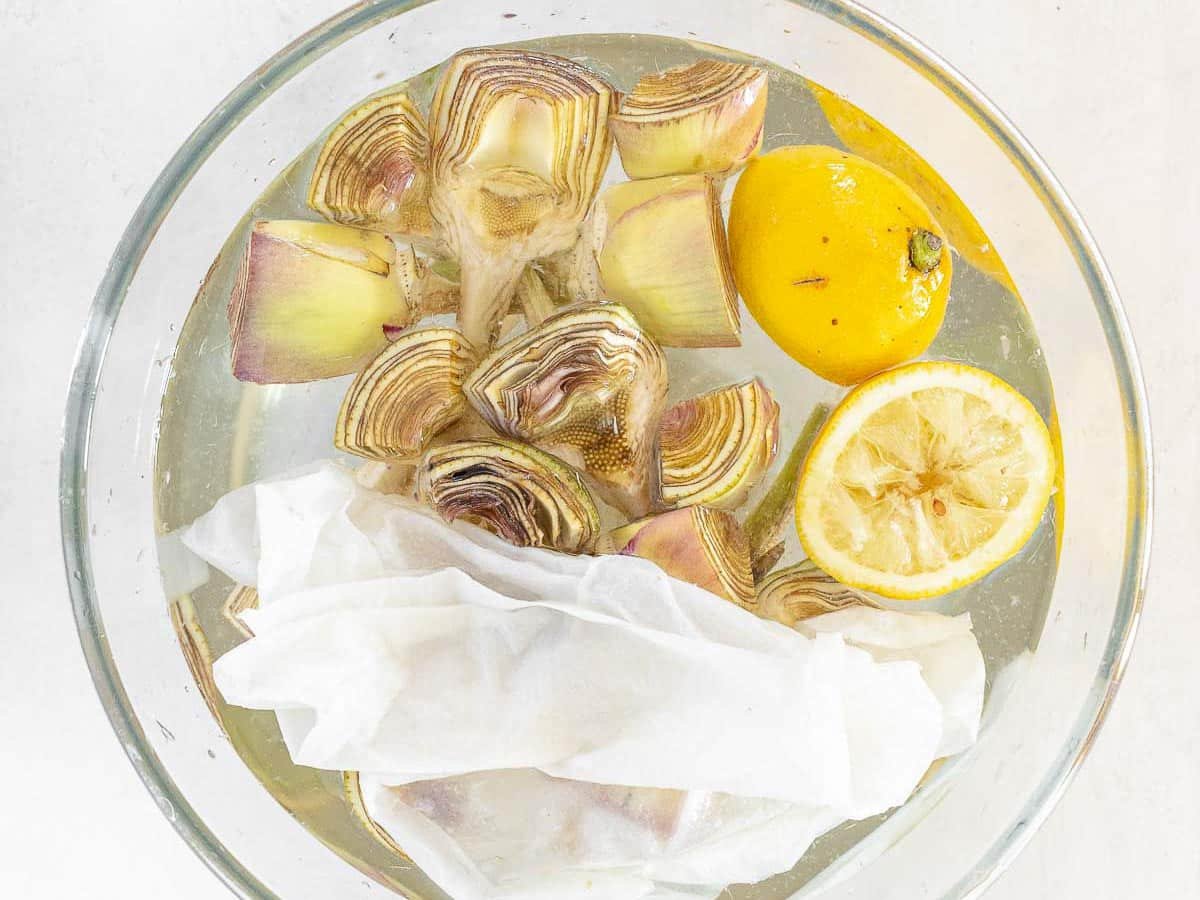
Sautè the artichokes in olive oil on medium heat for about 3 minutes, and add ¼ cup of dry white wine. You can use vegetable broth if you prefer not to cook with wine.
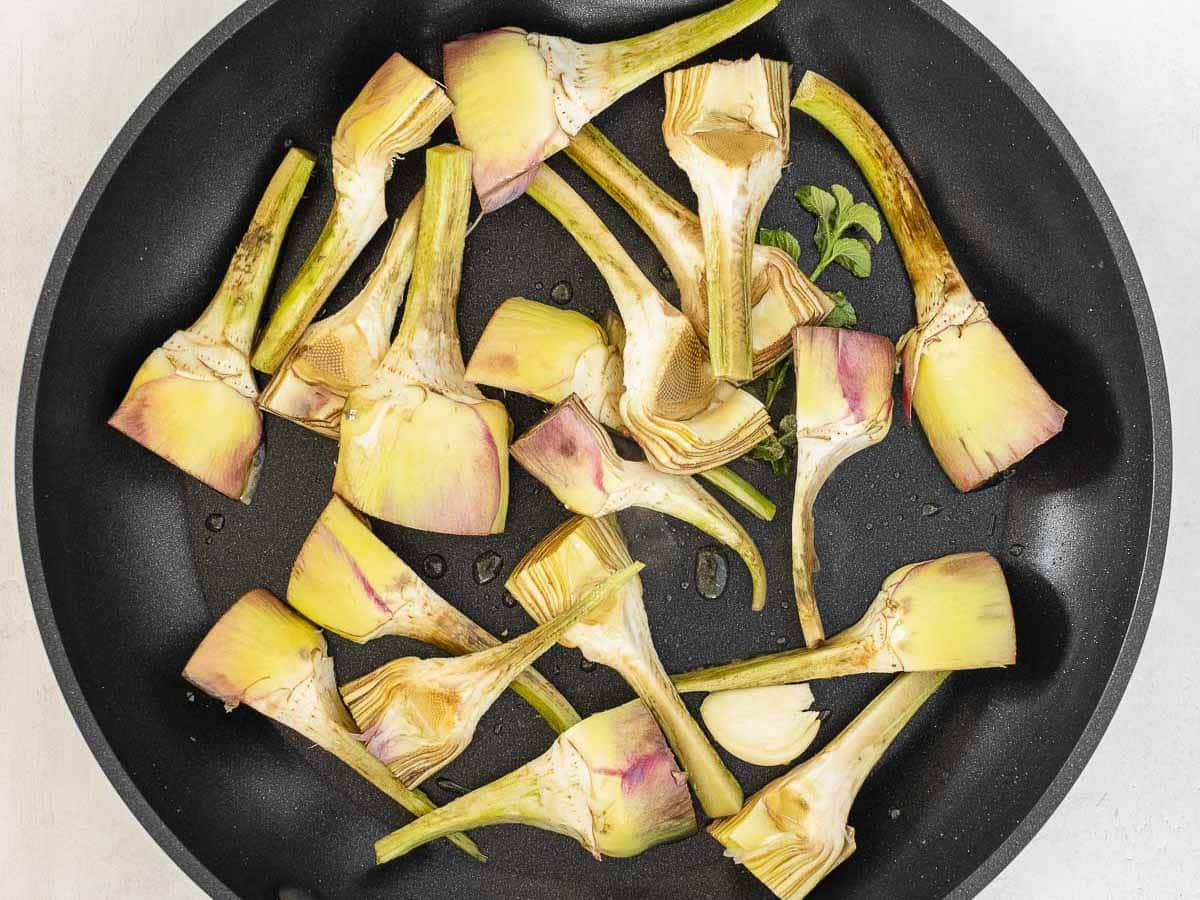
Simmer without a lid for about 5 minutes; once the wine has evaporated completely, add a cup of water and season with a pinch of salt and pepper.
Cover with a lid and simmer on low heat for 15 minutes or until the artichokes are tender.
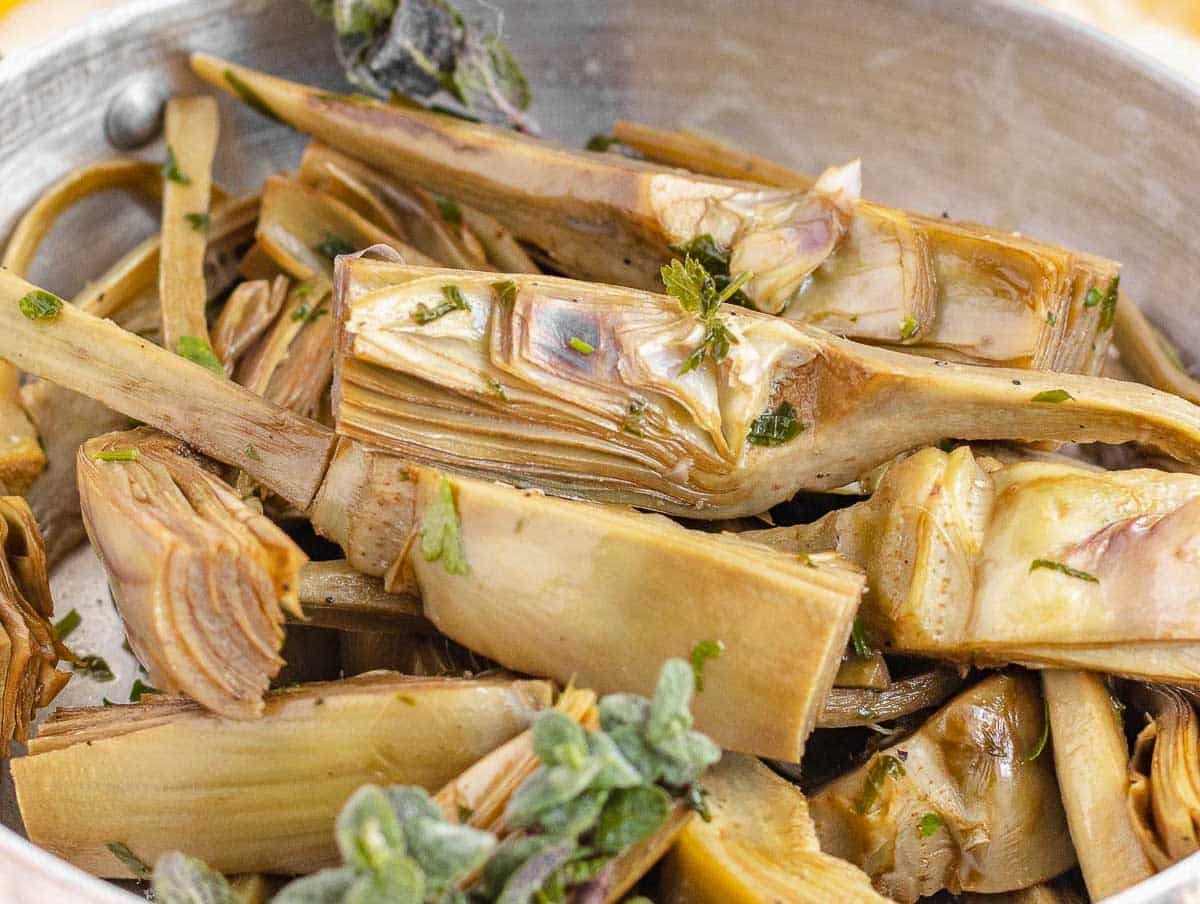
Sprinkle with chopped parsley or mint, and serve. They are great as a starter and added in a chickpea frittata.

Roasted artichokes
Another great way to cook artichokes is to bake them in the oven with potatoes.
First, peel and cut 3 to 4 medium potatoes into wedges and put them in a large pot with cold water. Set aside.
Then, clean the artichokes as before, cut them in quarters, remove the choke, and place them in cold lemon water to prevent them from turning brown.

Now preheat the oven to 430°F or 220°C, and boil the water with the potatoes.
Pre-cook the potatoes for 5 minutes. Then add the artichokes to the boiling water and boil with the potatoes for five more minutes.
Pre-cooking the potatoes and the artichokes will keep them soft and moist inside once baked.
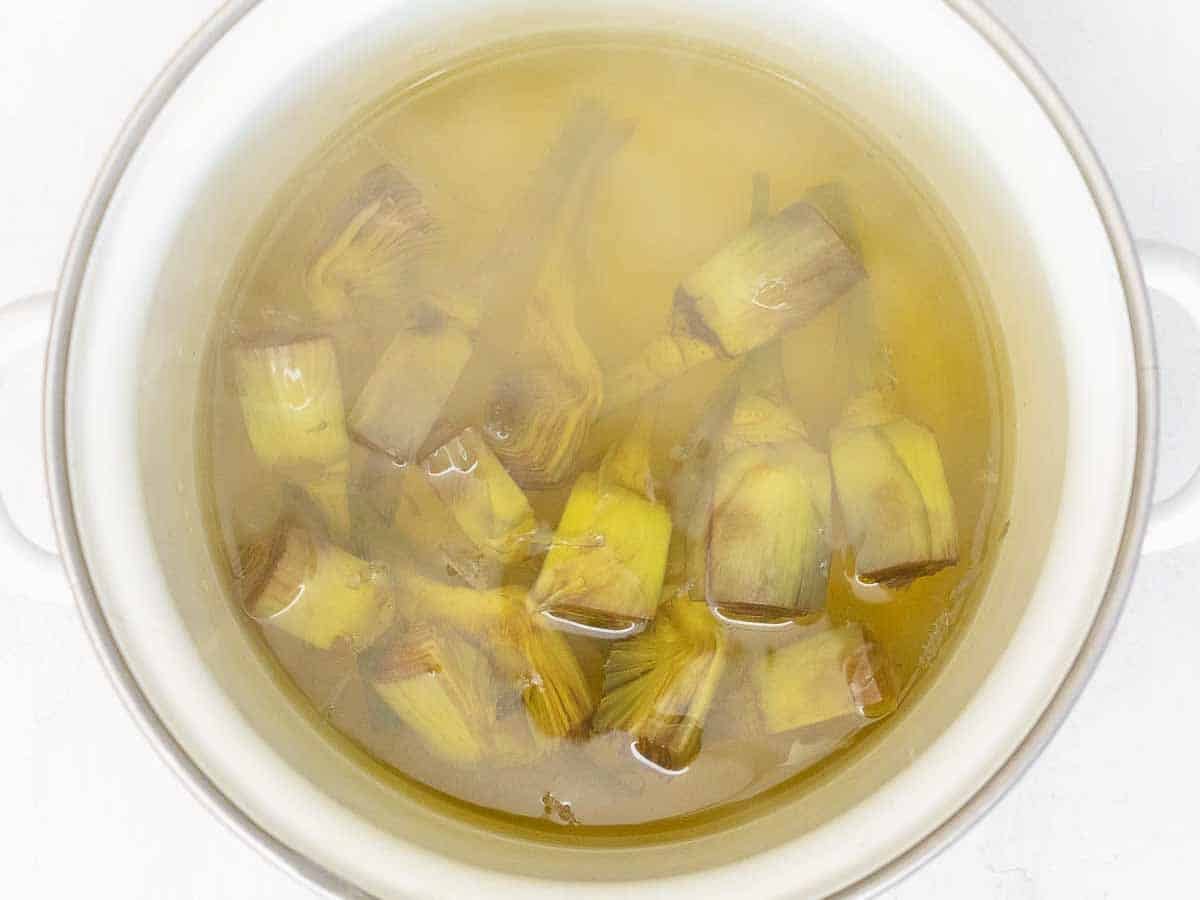
Drain the potatoes and the artichokes and place them onto a baking tray.
Season with a generous pinch of salt, black pepper, dried herbs, and spices like rosemary, mint, paprika, a drizzle of olive oil, and a couple of crushed garlic cloves.
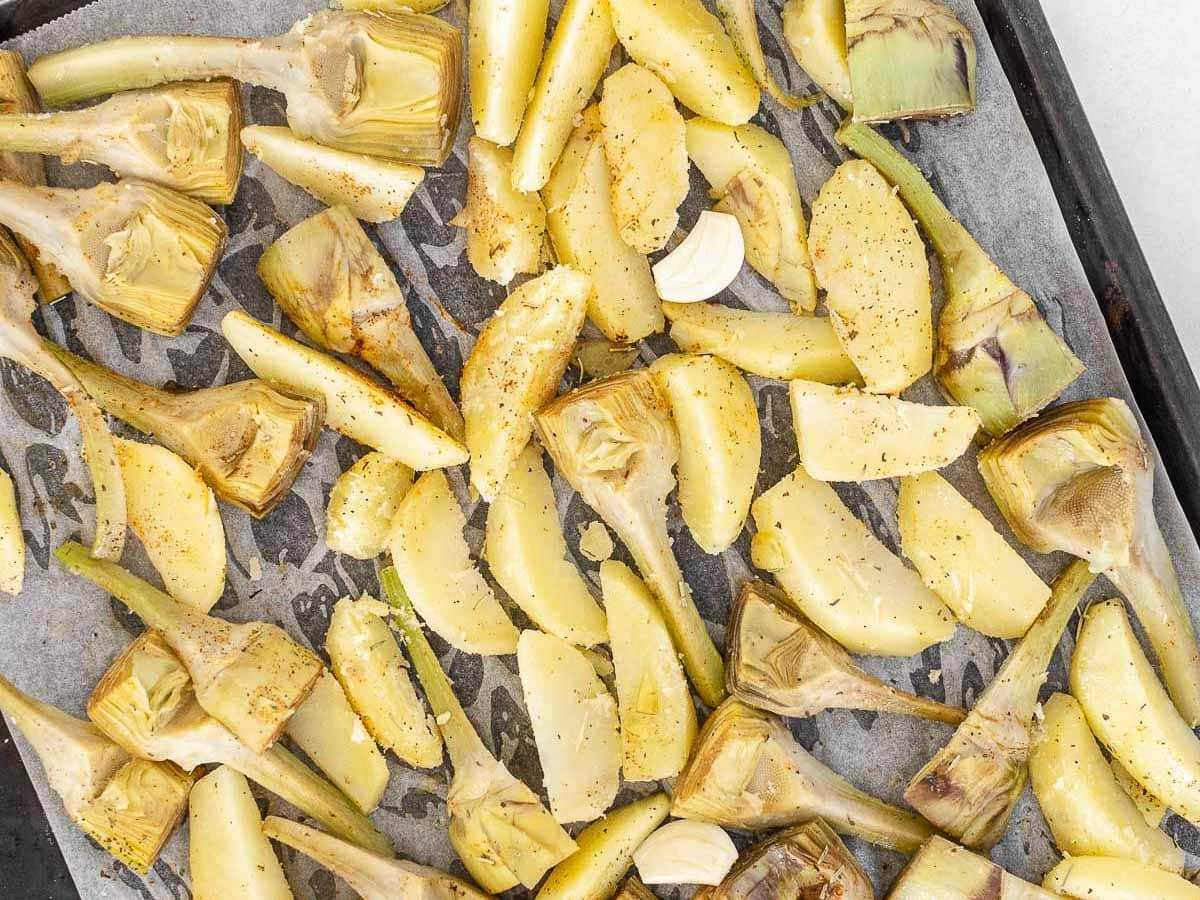
Toss everything together, then bake for about 15 to 20 minutes, till the potatoes and the artichokes are crispy and golden on the outside but fully cooked on the inside.
Serve as a side with freshly chopped parsley, chipotle sauce, or tahini dressing.
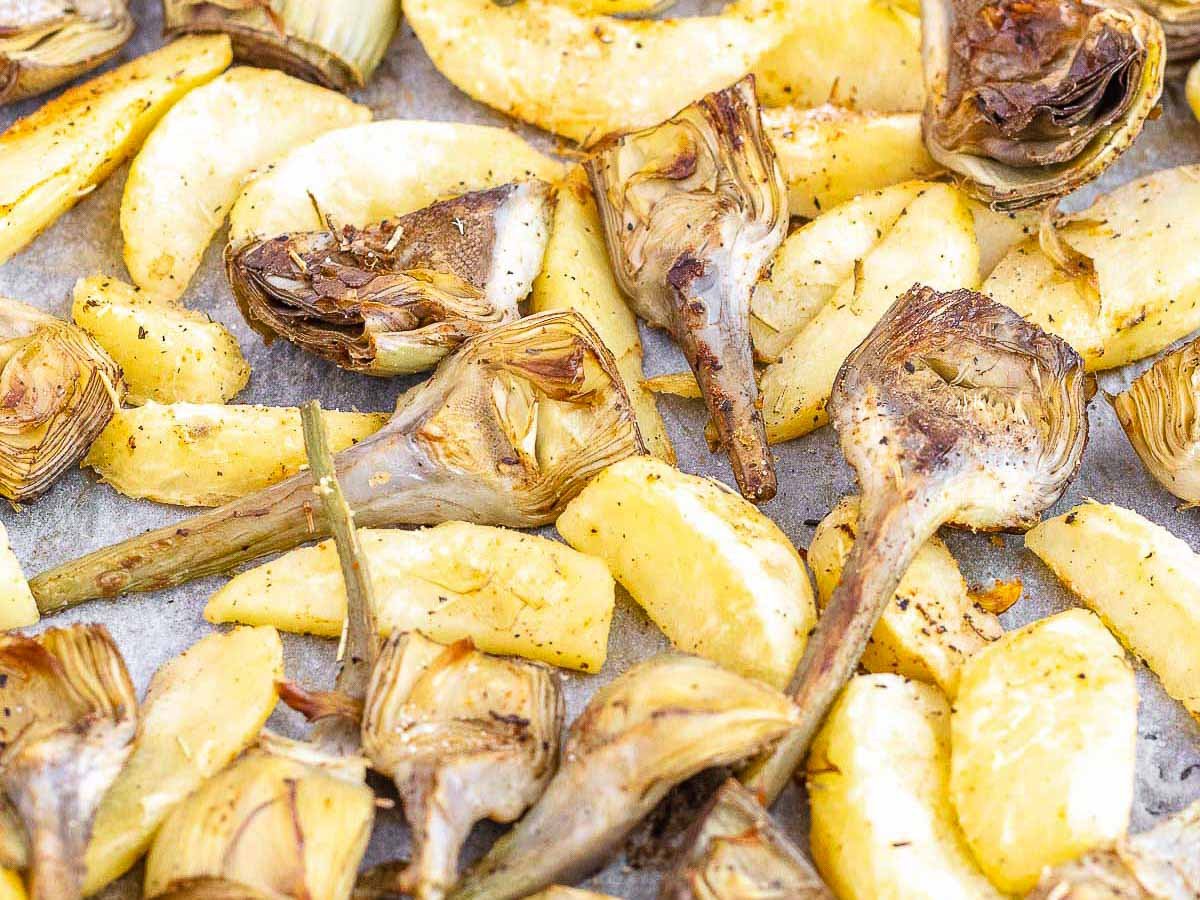
Recipes with Jarred Artichoke Hearts
Artichoke pasta
This 20-minute artichoke pasta is creamy, tangy, and packed with tender artichoke hearts. It’s an easy yet restaurant-worthy everyday meal that everyone will love.
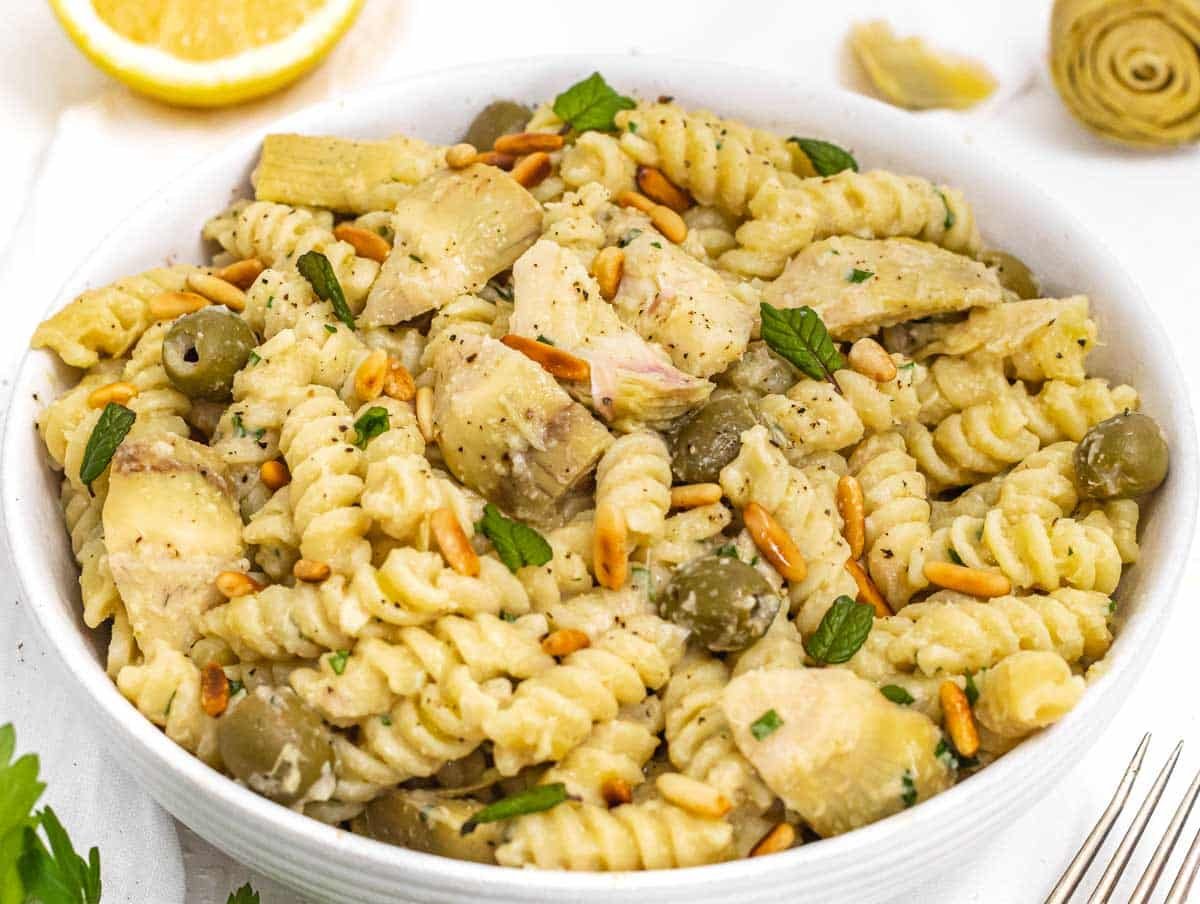
Artichoke salad
This bright, fresh, Italian-inspired artichoke salad is a quick side dish and a healthy meal where arugula, tomatoes, artichokes, and olives marry a tasty Italian dressing.
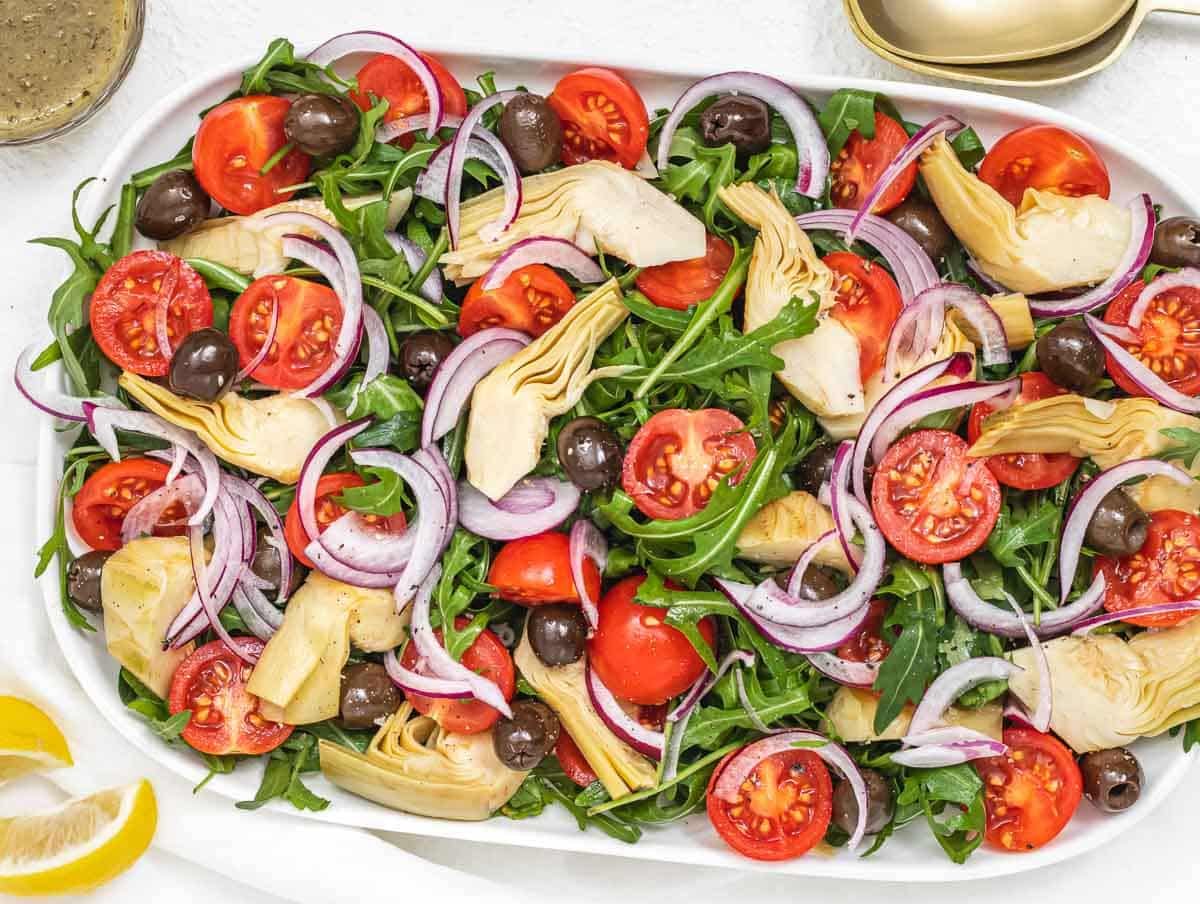
Artichoke pasta bake
This creamy artichoke pasta bake is with artichokes, peas, and potatoes cooked in a pan; it’s excellent as a delicious and fulfilling pasta dinner.
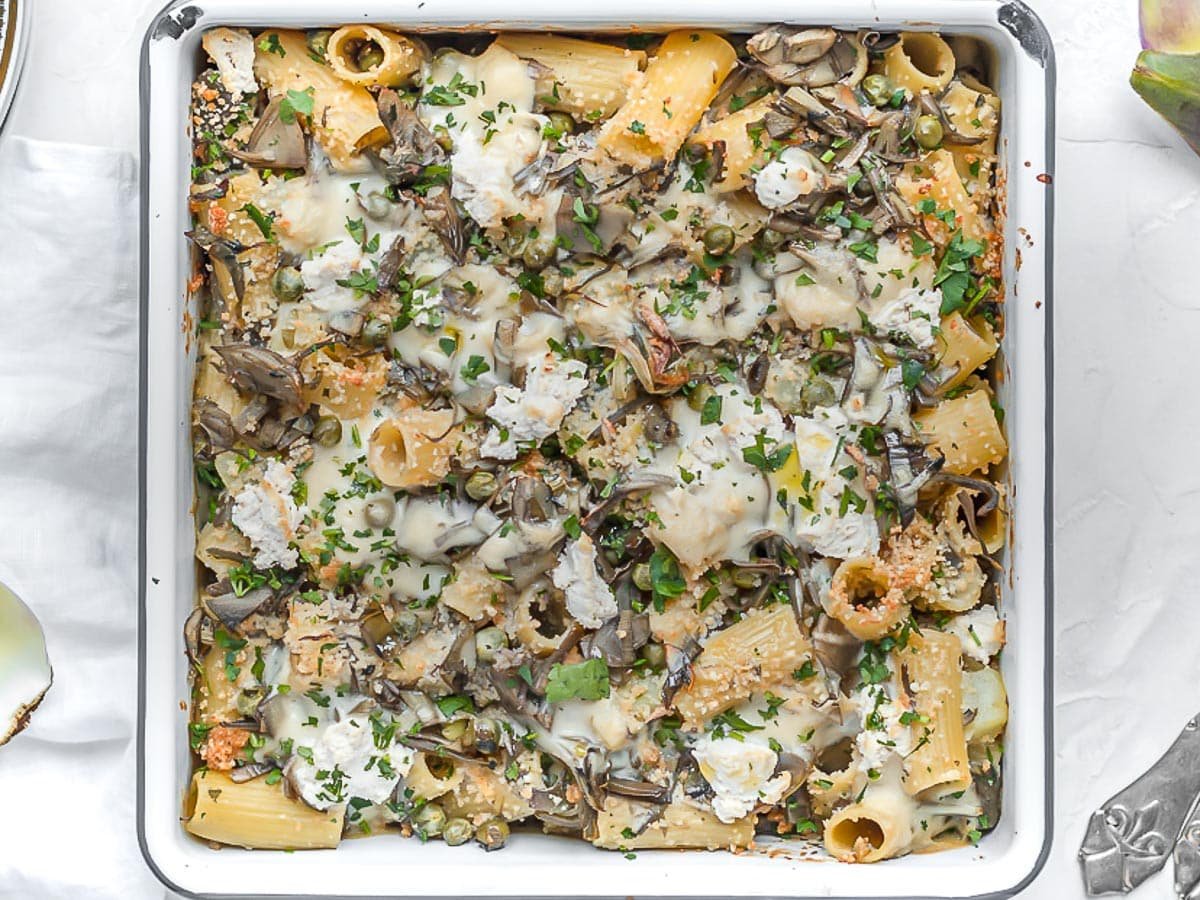
Artichoke pesto
Enjoy artichoke pesto just like any other pesto; it’s super quick and easy to make at home. It’s excellent as a sauce with pasta, a spread on bruschetta, or pizza and veggies.
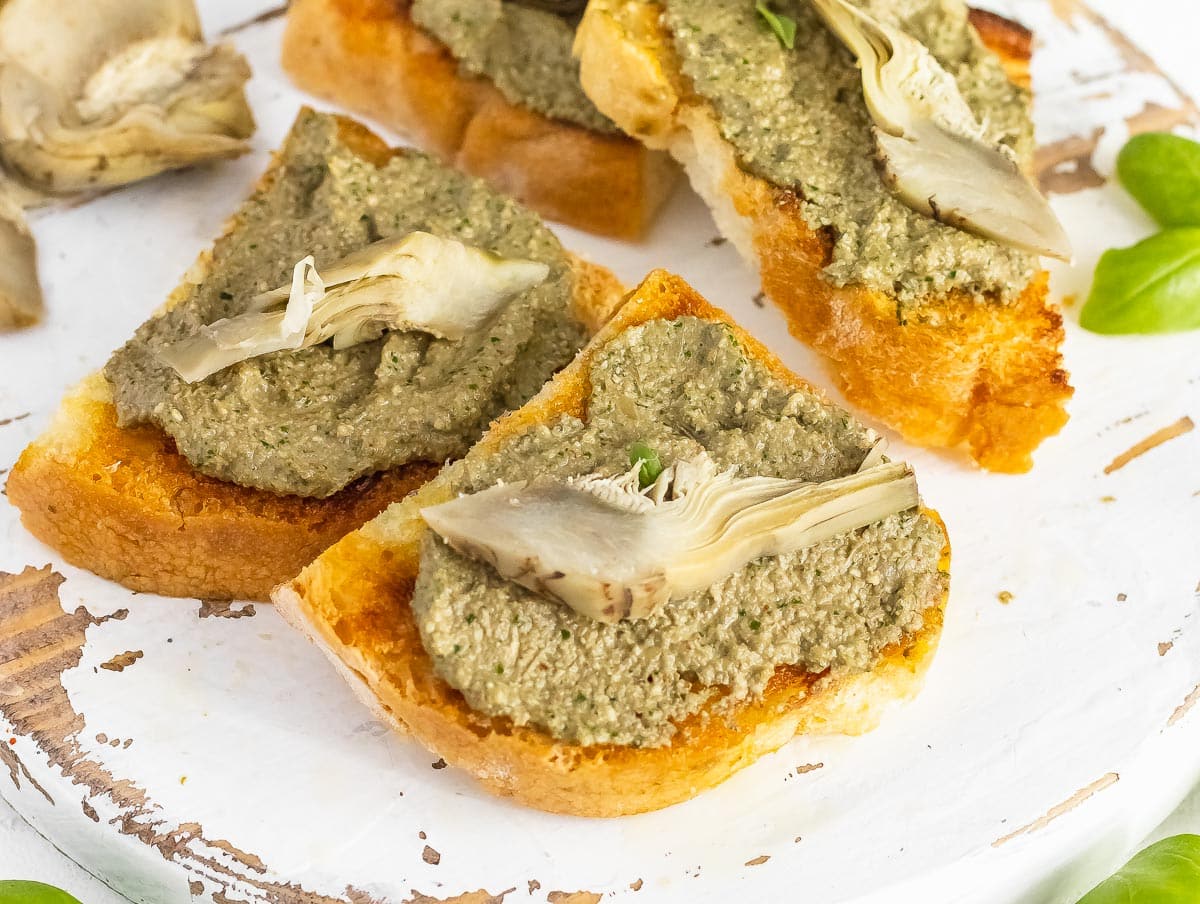
Artichoke cream cheese (dairy-free)
This vegan cream cheese is made with five simple ingredients, and it’s smooth, velvety, and perfect to use as a starter, dip, or spread in a sandwich.
Make it with artichokes for a tangy and tasty condiment that you can easily meal–prep for the week.
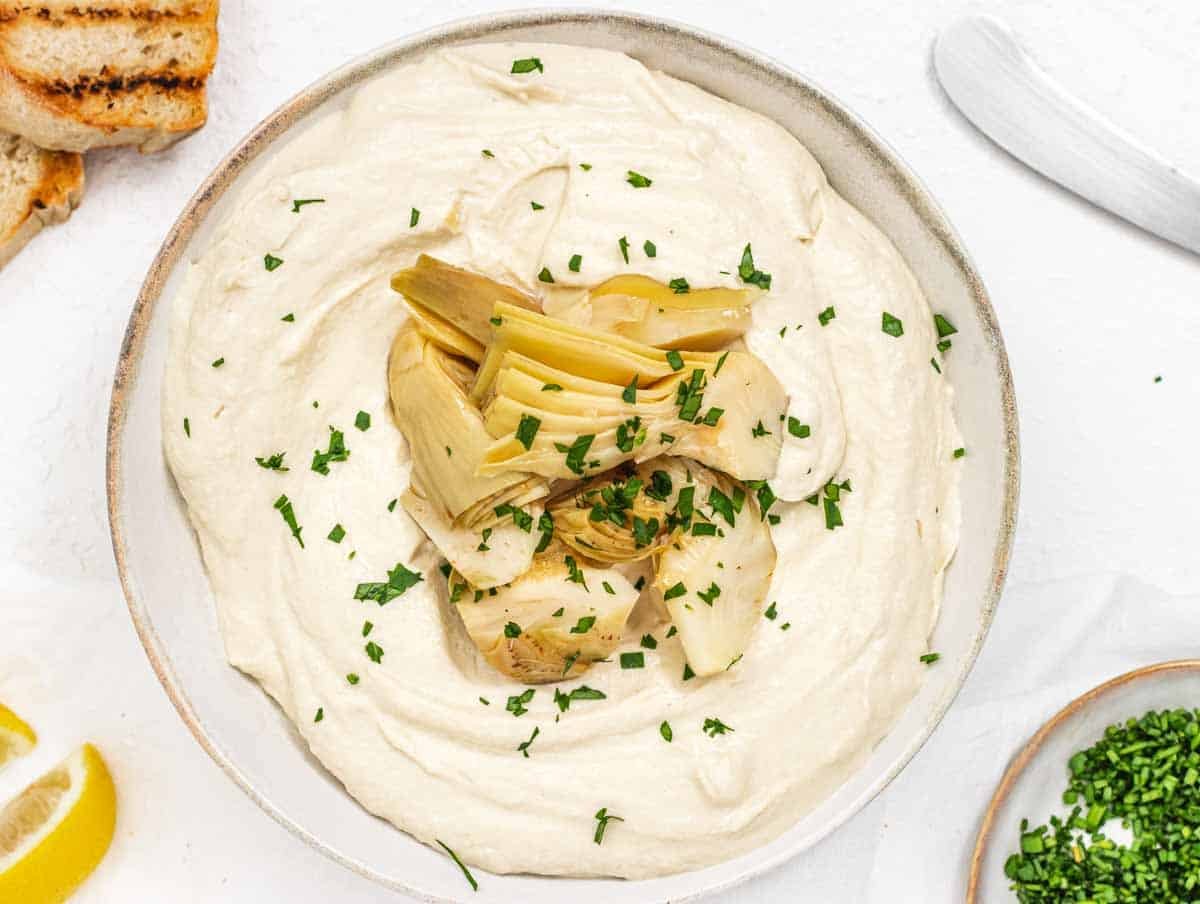
Recipes with Artichoke Scraps
Artichoke hummus
We make artichoke hummus with the scraps – leftover leaves and stems – of the artichokes.
It’s as delicious and creamy as hummus and roasted red pepper hummus and with a nutty artichoke flavor.
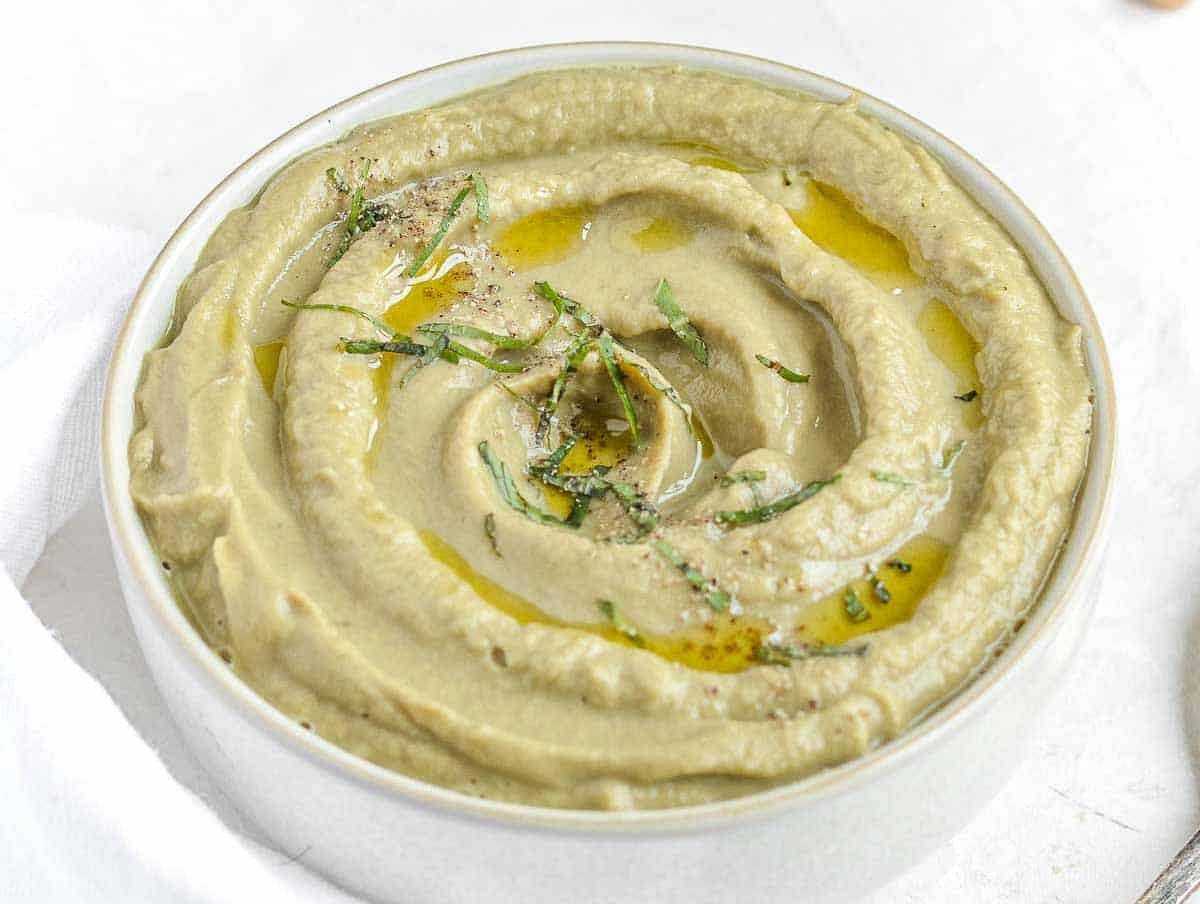
Cream of artichokes
This artichoke cream is made with 100% pure pulp extracted from the artichokes’ boiled scraps (leaves and stems) with a rotary vegetable mill.
Serve it as a main dish and make our no–knead focaccia for a Mediterranean–inspired dinner.
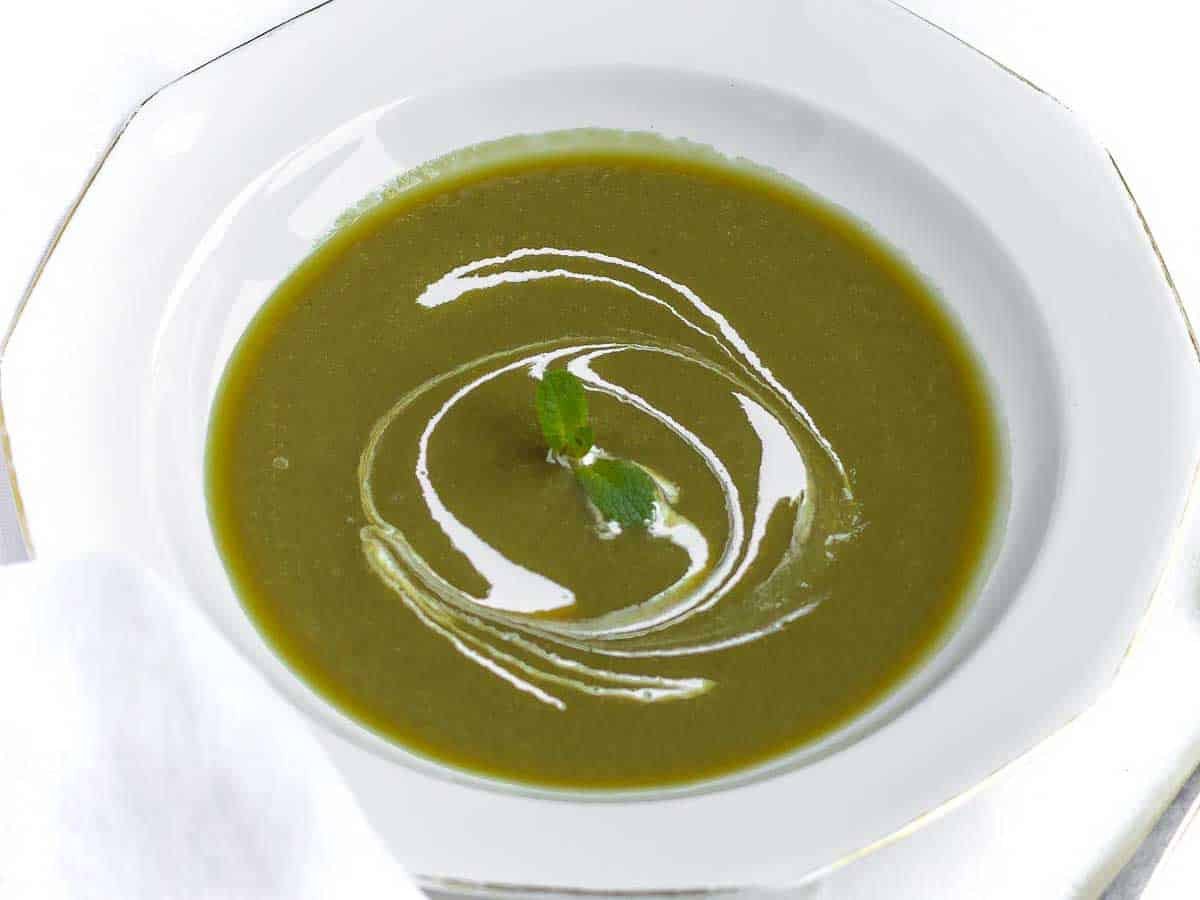
Artichoke mayonnaise
This is best served with deep-fried artichokes. We first make a vegan mayonnaise with vegetable oil and soy milk.
Add a dash of lemon juice and a pinch of salt, then mix it with the artichoke pulp extracted from the scraps of the artichokes with a rotary vegetable mill.
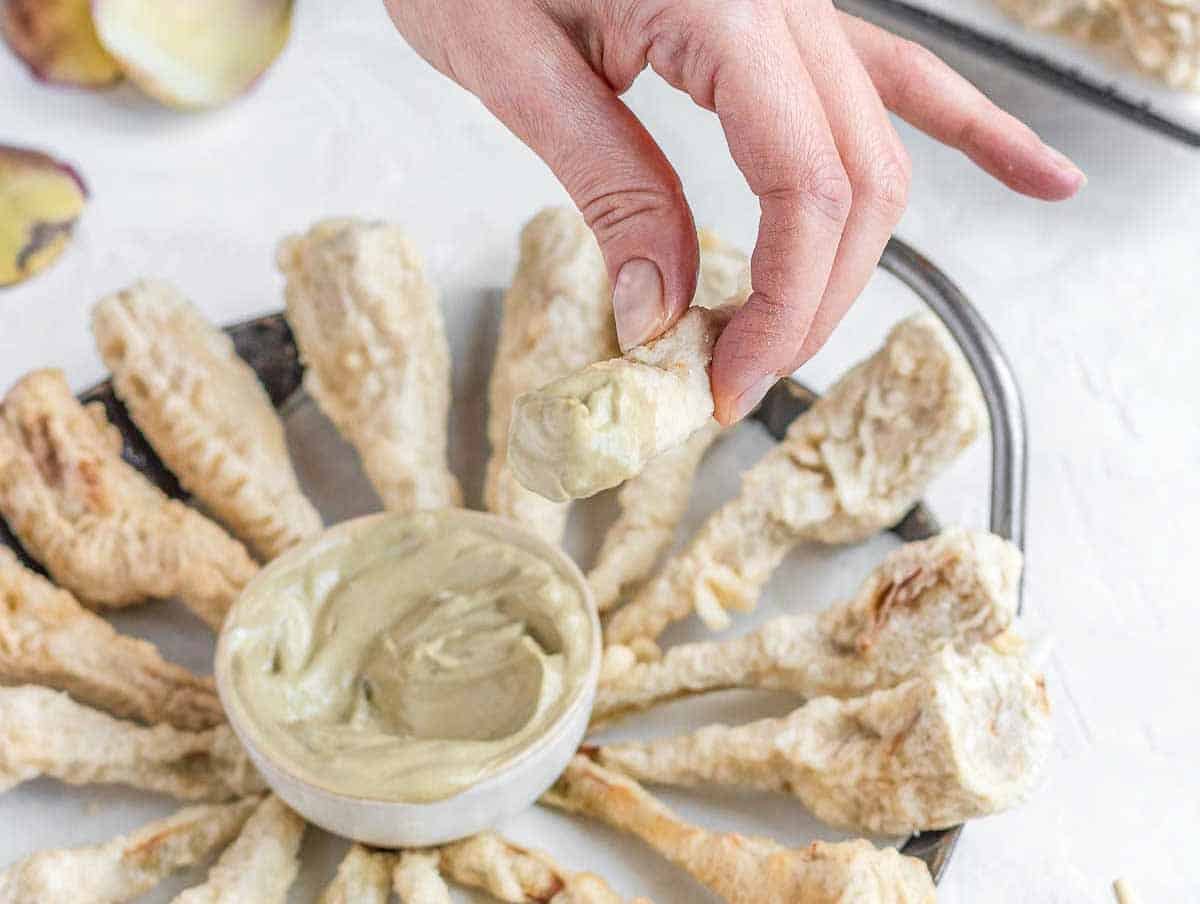
How do you choose which artichokes to buy?
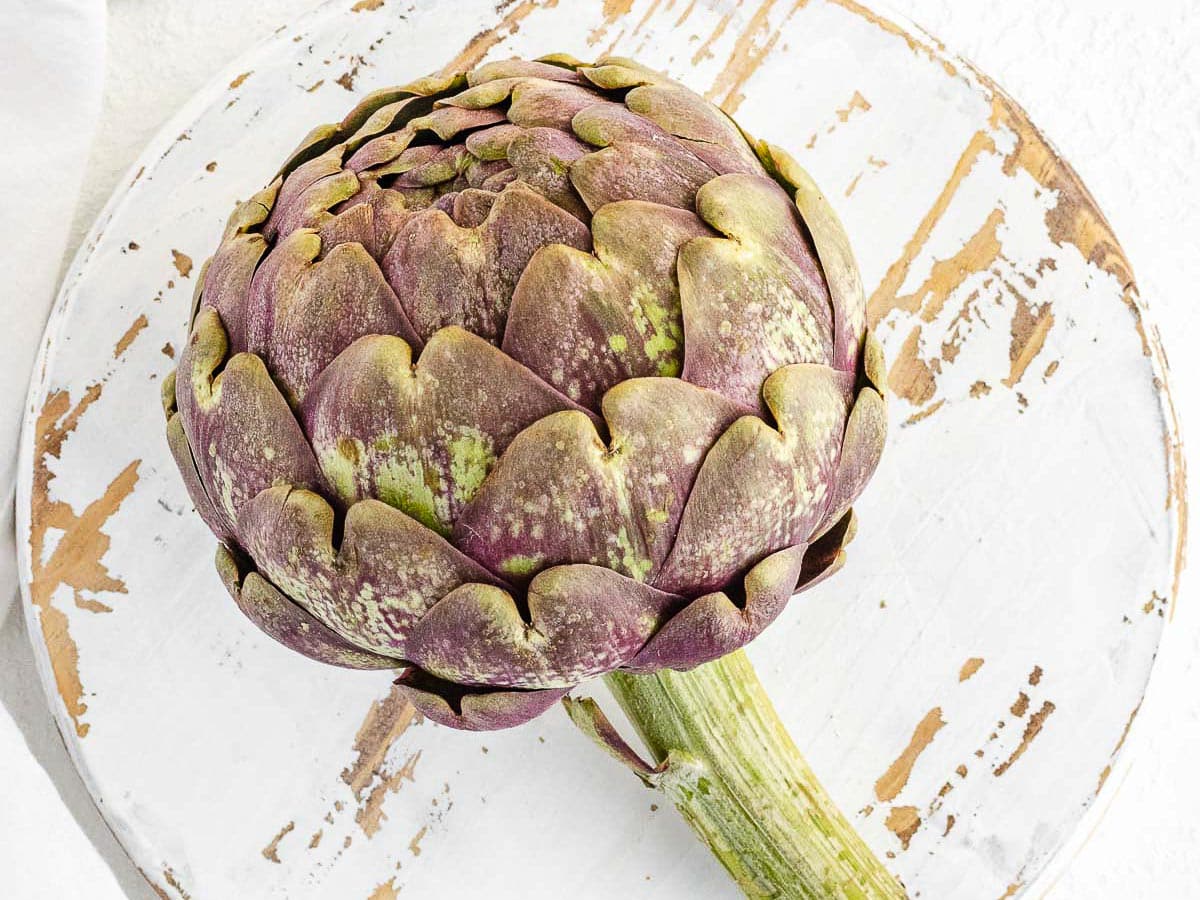
When buying artichokes at the farmers market or grocery store, it’s good to make sure they are fresh, as old artichokes tend to have a choke with more hair and rigid leaves, so you’ll have to discard more.
An artichoke is fresh when it’s 1) heavy, 2) squeaky when you squeeze its head/leaves, 3) toned, not floppy, especially the stalk, and 4) has a uniform color, with a few or no dark spots.
We are using purple artichokes here, but sometimes you can find green ones, also known as globe artichokes, depending on where you live. Both types are delicious.
Ingredients that go well with artichokes

Lemon
When cleaning artichokes, lemon juice is essential to prevent them from turning brown, but it’s also delicious on top of them once they are cooked. It adds a fresh and acidic touch that enhances the sweet, nutty flavor of the artichokes.
Mint and flat-leaf parsley
Those two fresh herbs are a match made in heaven with artichokes. We use mint for cooking the artichokes and the Italian flat-leaf parsley to sprinkle on top once they are cooked.
Olive oil
Another excellent flavor match, best if good quality, and extra virgin olive oil. You can use it for cooking the artichokes and for drizzling on top. It’s divine with them.
Garlic
Fresh garlic complements its flavor perfectly.
Mayonnaise and butter
Artichokes are very low in fat; from a mouthfeel perspective, they go well with fatty ingredients.
Aside from extra virgin olive oil, we love them with our vegan mayo as a dip and, in rare cases, with melted or dairy-free vegan butter.
Health benefits of artichokes
According to WebMD, artichokes are a superfood thanks to their high antioxidant content.
Several proven studies show that artichokes can help control blood pressure and hypertension, lower cholesterol, and improve liver function.
They contain few calories per serving, virtually no fat, low sodium, and a relatively good amount of protein at 4 grams per medium artichoke.
To top all of this off, they are packed with essential nutrients such as potassium, vitamin C, magnesium, folate, and plenty of fiber.
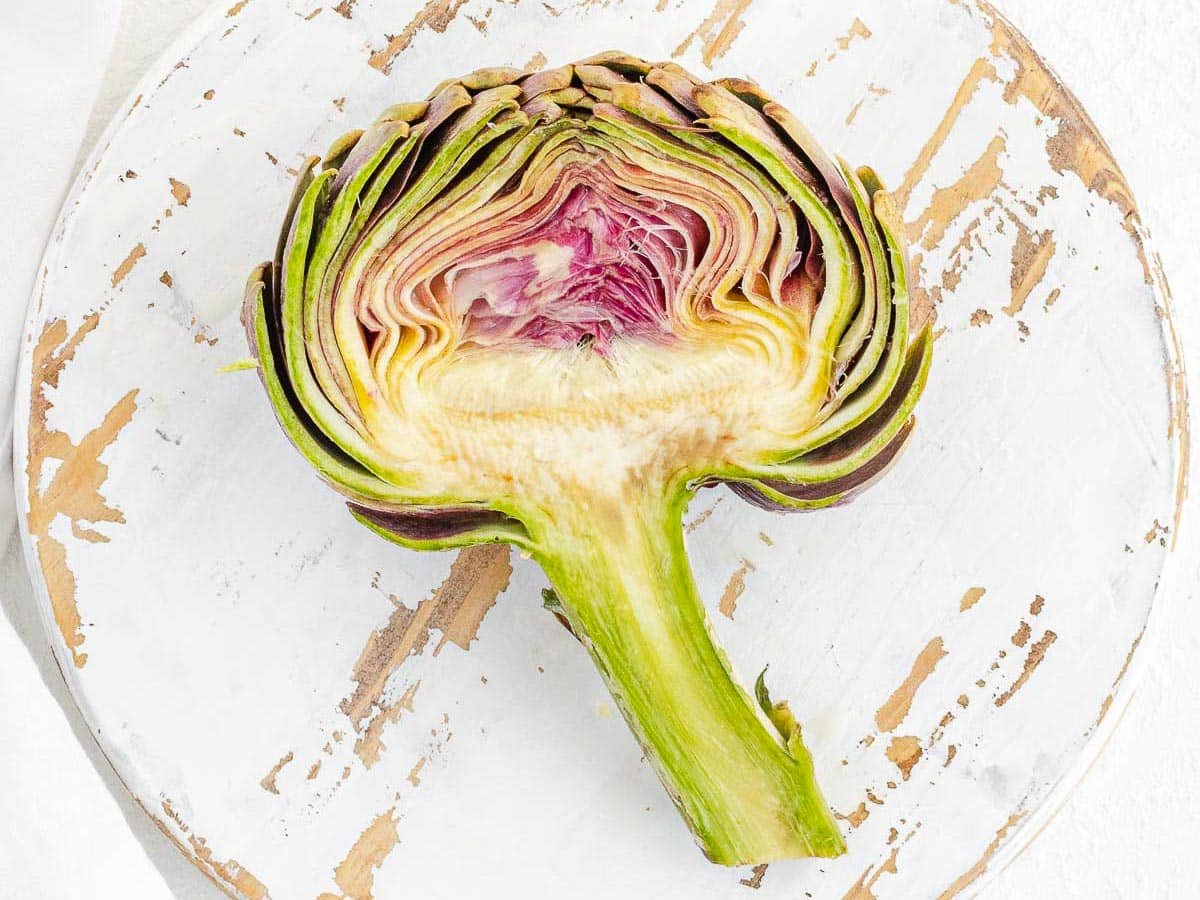
Questions
Artichoke is among the most antioxidant-rich foods in the world. They are low in fat, high in fiber, and full of vitamins and minerals. You can find Vitamin C, K, folate, phosphorus, and magnesium in them.
Artichokes have a unique, bitter-sweet taste with earthy, olive, and nutty notes. They have a soft, tender, and buttery texture when cooked.
Artichoke scraps are full of flavor, flesh, and nutrition. The best way to use them is to boil them for 1 hour, then pass them through a rotary vegetable mill to extract the pulp and separate the inedible fiber. Then, you can make soup, pasta, hummus, and many other recipes with the pulp juice.
More basics
- How to cook brown and green lentils
- How to cook chickpeas
- How to cook black lentils
- How to cook red lentils
- How to cook couscous
- How to cook asparagus
Similar Recipes
Are you looking for more delicious veggie-packed recipes? Then, you are in the right place! Check out our:
- Cauliflower recipes: from cauliflower soup to curry and whole roasted cauliflower.
- Lentil recipes: nutritious, wholesome, and delicious recipes with lentils.
- Soup recipes: tasty homemade soups, made simple, with fresh seasonal ingredients.
- Sweet potato recipes: get inspiration from our best everyday sweet potato recipes.
- Tofu recipes: tofu can be delicious if you know how to cook it.
- Chickpea recipes: 35 recipe ideas, from curries to muffins, stews, and soups.
- Eggplant recipes: a collection of our favorite recipes with eggplant.
Collections
30 Lentil Recipes
Collections
40 Chickpea Recipes
Recipes
30 Tofu Recipes
Collections
How to Cook Asparagus
For many more easy and healthy side dishes, check out our Sides Recipes Page!

How to Cook Artichokes (Steamed Artichokes)
Equipment
- steamer basket
Ingredients
- 5 artichokes
- 1 lemon
- 2 leaves mint or bay leaves
Optional Serving suggestions
- 2 tablespoons extra virgin olive oil
- 1 lemon
- 1 pinch salt
- 1 handful parsley chopped
- 2 tablespoons vegan mayo (optional)
- 2 tablespoon chimichurri (optional, instead of the other ingredients)
Instructions
CLEAN ARTICHOKES
- Fill up a large bowl with cold water, then squeeze the juice of a lemon in it. Set aside.With a serrated knife, cut off the top spiky ⅓ top part of the artichoke.Tip: when handling artichokes, brush your hands with lemon juice or wear gloves to prevent your finger from turning brown.
- Rub the cut part with lemon to prevent it from turning brown.
- Remove tough outer leaves.
- Trim the stem down to 2 inches (5 cm) and peel it.
- With your thumbs, loosen up the head of the artichoke, exposing the choke.
- With a knife or with a sturdy teaspoon, remove the choke – the fuzzy central part.
- Put each cleaned artichoke in the bowl with the lemon water to prevent discoloration and browning, and repeat till you clean all.
STEAM ARTICHOKES
- To a large pot, add 1½ inches (3.5 cm) of water and the mint. Put the steamer basket into the pot, then arrange the artichokes on the steamer basket, head down.
- Cover the pot, bring to a simmer, and steam until tender. It can take 20 to 45 minutes, depending on the size of your artichokes. Pierce with the tip of a pointy knife to check doneness. The blade should slide in easily.
- Drizzle with chimichurri and dip petals in vegan mayo.
- Or cut them in half lengthwise and simply with a drizzle of extra virgin olive oil, a squeeze of lemon juice, fresh parsley, a pinch of salt, and black pepper.
Video
Notes
Nutrition
If you liked these artichoke recipes, you might also enjoy:

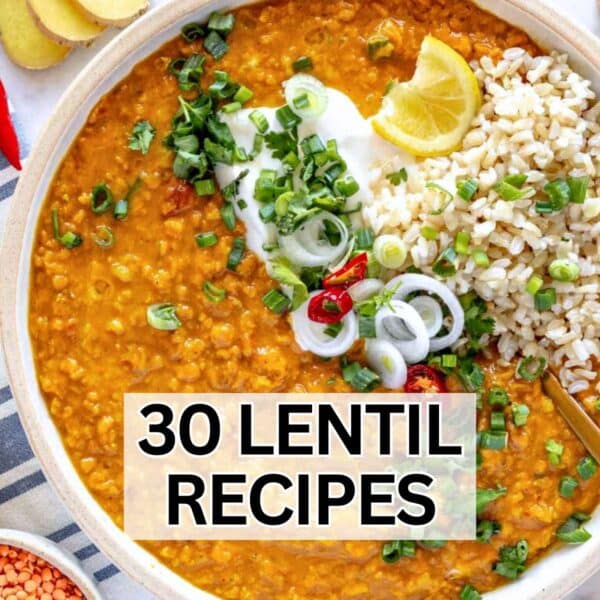





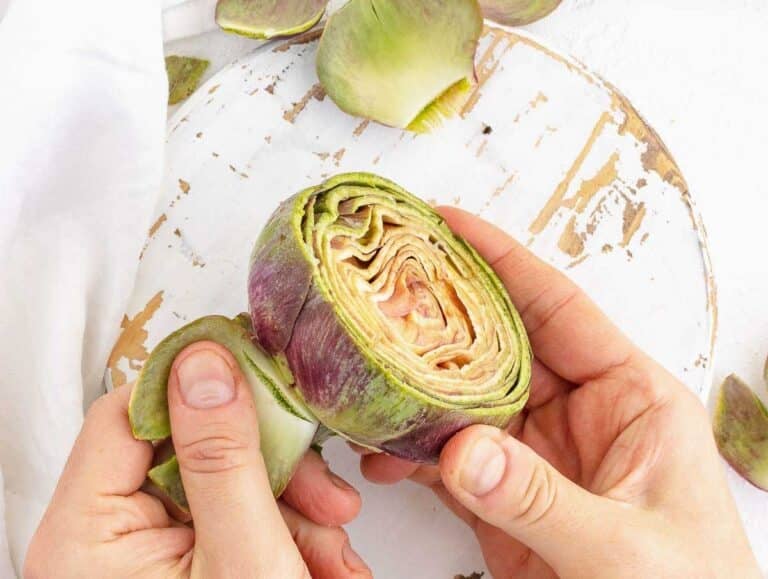

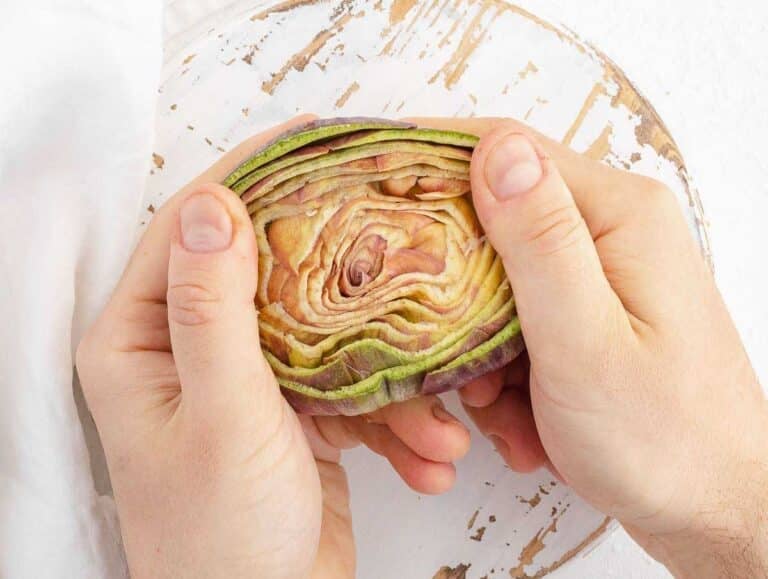
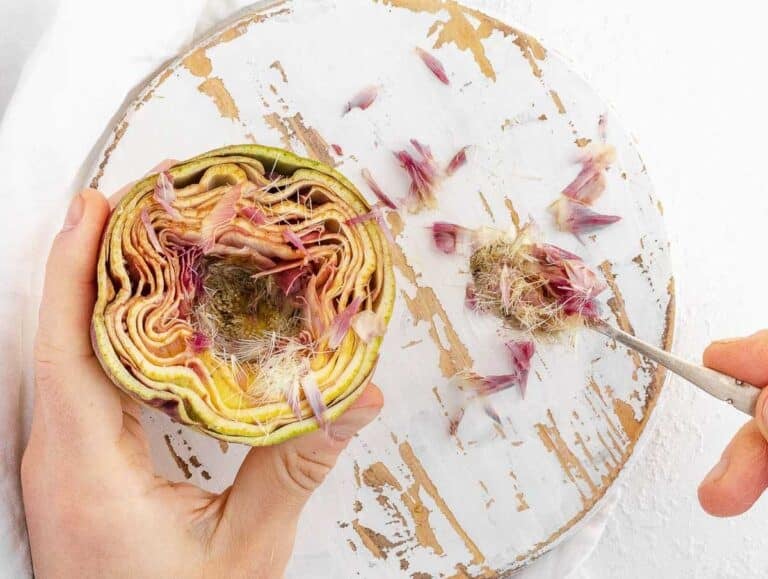

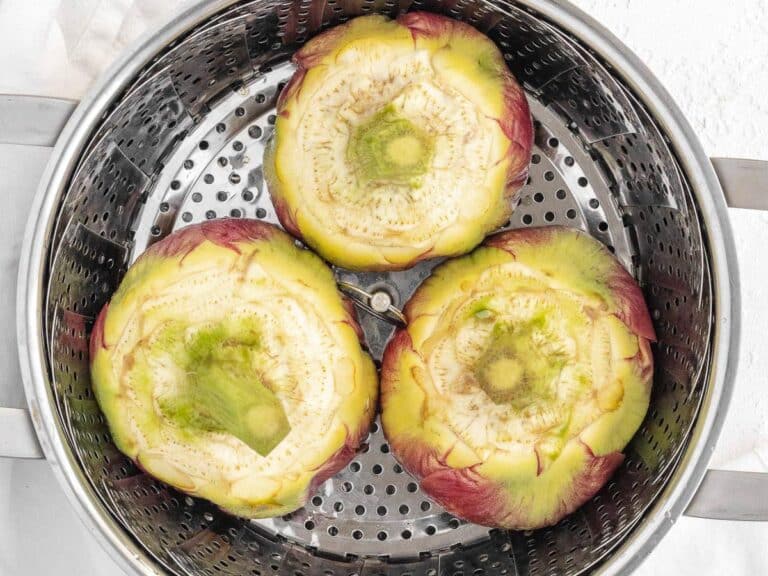
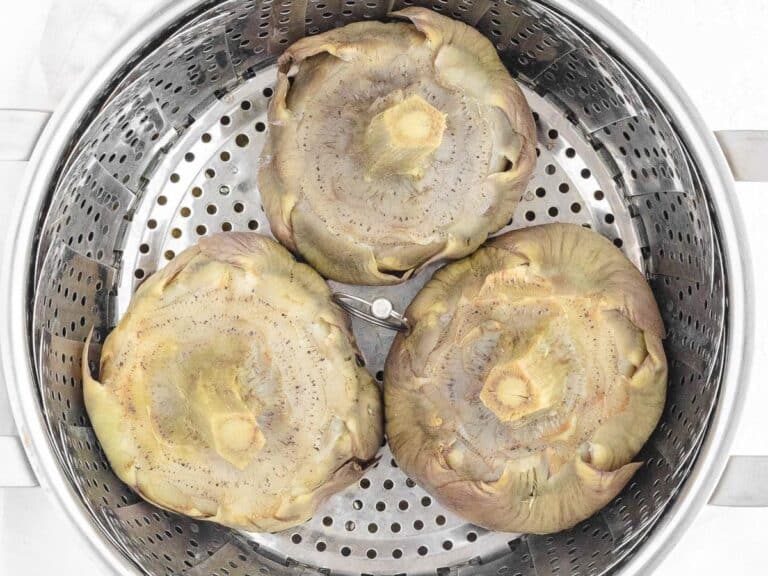
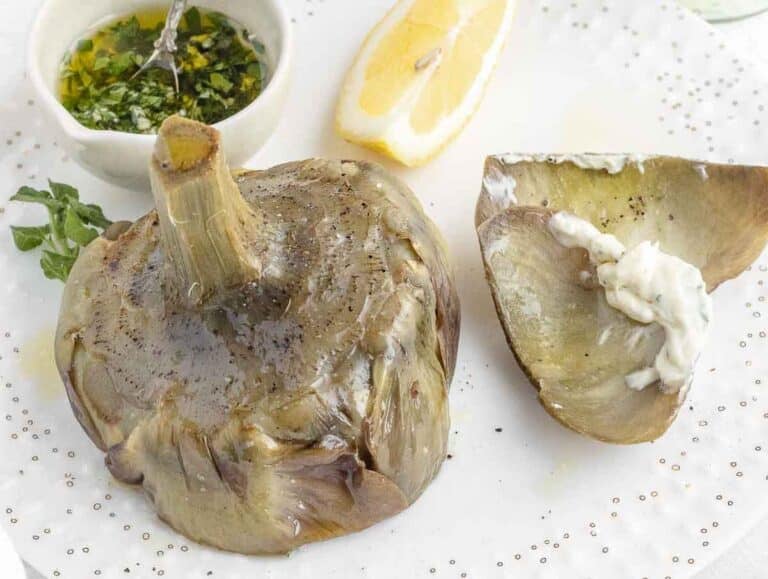

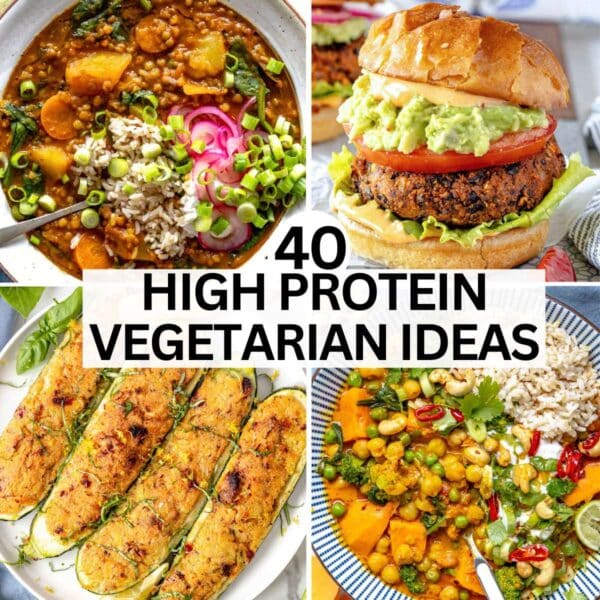
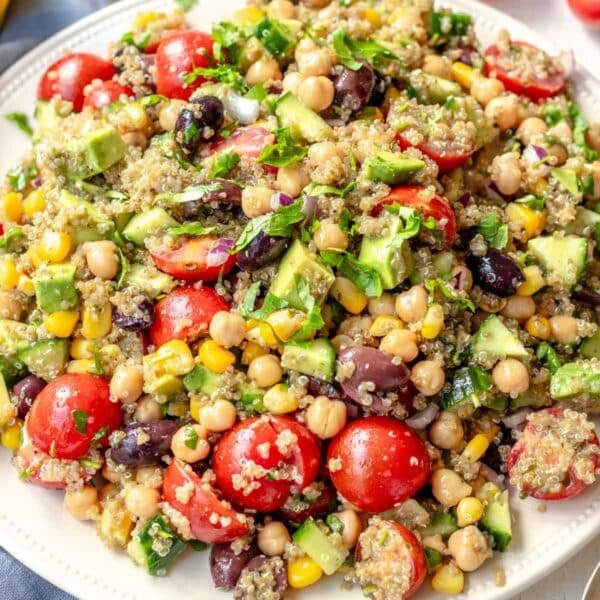

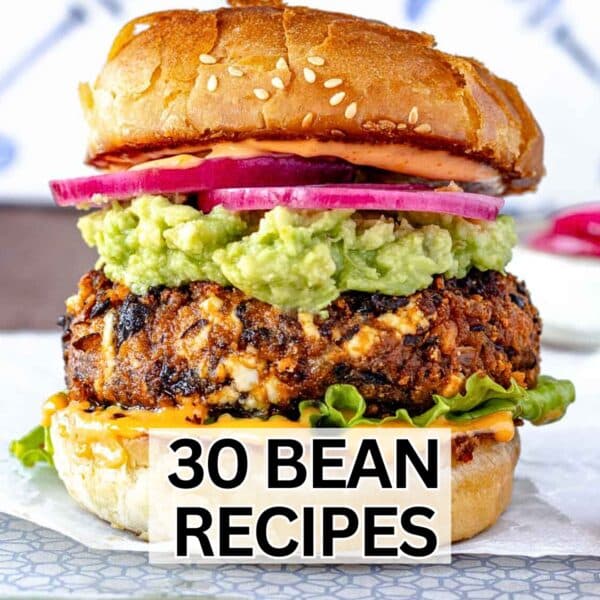

Very informative.
Please do a book on this. I really enjoyed it but I like books.